Monday, 11 April 2016
April 20th is National Canadian Film Day
 The Annapolis Valley Regional Library is once
again participating in National Canadian Film Day on
April 20th. What is that,
you say? Well, the organizers at REEL CANADA say this:
The Annapolis Valley Regional Library is once
again participating in National Canadian Film Day on
April 20th. What is that,
you say? Well, the organizers at REEL CANADA say this:
“April 20, 2016, is National
Canadian Film Day, a day to throw off the shackles of fear and insecurity,
stand together with Canadians from coast to coast and pat ourselves on the back
for something other than various ice-related sports and sports-related doughnut
shops (not that we don’t love ice-related sports and doughnuts). It’s a
light-hearted intervention for our national consciousness, a wake-up call to
anyone who has not yet been exposed to the great cinematic stories we tell one
another in this cold, vast country. It’s
a way to get over ourselves and have some FUN!”
Thanks
to REEL Canada, our library has public performance rights to show these four Canadian
films on April 20th.
Plan
to join us at one (or two!) of the following locations.
Murdoch C. Smith Memorial Library in Port Williams – screening The Whale at 2:00 p.m.
Windsor Regional Library – screening Gunless at 6:00 pm
Rosa M. Harvey Middleton & Area Library – screening New Waterford Girl at 6:30 pm
Check at your local branch library or in the online catalogue for great Canadian film titles you can watch at home.
-------------
From Nova Scotia with Love- Beloved Trailer Park Boys vs Nova Scotia Liberal Majority Cuts like a knife
Snoop Dogg in the Trailer Park
Rapper thrills star-struck fans
AARON BESWICK TRURO BUREAU
abeswick@herald.ca @CH_ABeswick BIBLE HILL — Tanisha Rushton woke Brittany Pictou up early on Wednesday morning.
“Snoop Dogg’s here, we’ve got to get going," Rushton, 19, declared.
Pictou, 18, wasn’t long getting out of bed.
As a cold rain fell on the Bible Hill Estates trailer park, Rushton and Pictou scrambled down Wild Chance Drive to meet the famous rapper.
For his part, between smoking small cigars and acting in scenes for the upcoming season of Trailer Park Boys, Snoop Dogg took the time to pose for photos with star-struck area residents.
Georgie Blenkhorn even got a hug. “Oh, he seemed like such a nice man," said the woman who didn’t give her age but would have a decade or two on the rapper.
So what was Snoop Dogg, who lives in Los Angeles, doing in a Colchester County trailer park? “The boys met him last summer at a festival in British Columbia and they all got along," said Gary Howsam, producer of the television show Trailer Park Boys, which is filmed in the park.
“They appeared in his show in L.A. and so we figured a way to fit him into the upcoming season."
Howsam declined to ruin the surprise of next season’s plot lines, but did say Snoop Dogg, along with Tom Arnold and Doug Benson, will be appearing in multiple episodes. Both Benson and Arnold, stand-up comedians, were also on set Wednesday.
Pictou and Rushton will be watching. “This sort of thing doesn’t really happen in Truro," P ictou said.
--------------------
NOVA SCOTIA'S LIBERAL MAJORITY GOVERNMENT HAS HIT... THE POOR, THE ARTS, STUDENTS, DISABLED AND AGED AND NURSES UNION HORRIFIC AND HARD...
Misguided minister costs CNIB dearly
Re: the Canadian Press story you published on July 13, ‟Non-profit groups denounce lesser-known reductions." I'd like to set the record straight regarding Community Services Minister Joanne Bernard's assertion that the non-profits that had their funding cut - like CNIB - don't monitor their outcomes or provide reporting mechanisms. She also questions whether non-profits know whom they help and if it's making a difference.
Over the last year, 2,312 Nova Scotians who are blind or partially sighted received more than 12,000 hours of services from CNIB to help them live more safely and independently.
CNIB uses a client relations management system to track the number of referrals, individuals who receive services and hours of service delivered. And yes, the programs and services CNIB specialists deliver do make a difference.
Individuals have reported a wide range of outcomes, including being able to independently prepare meals, identify and administer medications, travel safely with a white cane, read print using magnifiers and assistive technology, and use public transportation to access educational, employment and recreational opportunities.
Long-term outcomes include less dependence on social programs, less depression and social isolation, fewer falls, and more people living independently in their homes rather than in long-term care facilities.
Let's be clear: the minister cut funding to CNIB based on her misunderstanding that we are an advocacy organization. She admits, ‟We didn't have much information about what they did." Yet CNIB met with her department annually and provided comprehensive information about our programs and services - and the impact.
As a result of the minister's misunderstanding, CNIB has recently been forced to eliminate 3.5 full-time positions and more cuts are imminent if we do not receive increased funding from government.
Without access to programs and services that help Nova Scotians who are blind or partially sighted to become more safe, independent and self-reliant, there will be a greater cost to government, individuals with vision loss, their families and our communities.
The Department of Community Services' cuts to CNIB programs and services are hurting some of our province's most vulnerable citizens.
Shortsighted, indeed.
Pamela Gow-Boyd is executive director and regional vice-president, CNIB (Atlantic Canada)

Bubbles and Snoop Dogg share a laugh on the set of Trailer Park Boys in Truro. AARON BESWICK • Staff
------------------------------
MADE IN NOVA SCOTIA- rock and roll baby... and some folk and country music with a twist of blues 4 ya.... THE RADIO MAN- FRANK CAMERON
 |  I Owe It All to Rock & Roll(and the CBC) Product Code: PC0232 ISBN: 9781897426654 Publisher: Pottersfield Press Product Format: Paperback / softback Price: CAD $19.95 In this hilarious and insightful memoir, Frank Cameron takes readers from his childhood to his professional days at CHNS and then the CBC and on to his present life, hosting a show at Seaside FM. Frank just can’t get radio out of his blood. In between is a satisfying chronicle of a media personality who never takes himself too seriously. Frank is funny, but he also doesn’t shy away from stating his opinions and telling it like it is. |
I owe it all to rock
& roll (and the CBC) : a memoir
Author
Cameron, Frank, 1938-
Publisher:
Pottersfield Press,
2015.
Physical description
127 pages :
illustrations ; 23 cm.
Summary:
Frank Cameron takes
readers from his childhood to his professional days at radio station CHNS in
Halifax, and then at the CBC and on to his present life, hosting a show at
Seaside FM. Frank just can't get radio out of his blood. In between is a
chronicle of a media personality who never takes himself too seriously. Frank
doesn't shy away from stating his opinions and telling it like it is. His radio
career began at CKEC in New Glasgow when he was in high school. In 1959, he
moved to Halifax and a career at CHNS. In 1967, he became a full-time staff
announcer at CBC, hosting various radio and television programs. After retiring
from CBC in 1995, he spent ten years with his alma mater, CHNS. He now
volunteers at Seaside FM, a community-based station in Eastern Passage, Nova
Scotia.
o
o In this hilarious and insightful memoir, Frank Cameron takes readers
from his childhood to his professional days at CHNS and then the CBC and on to
his present life, hosting a show at Seaside FM. Frank just can't get radio out
of his blood. In between is a satisfying chronicle of a media personality who
never takes himself too seriously. Frank ... (to read more see "A Look
Inside")
-------------------------

Our filming in our Nova Scotia matters... from Jesse Stone- 2 nature- 2 Bubbles... it all matters-MADE IN NOVA SCOTIA IS PRICELESS....



---------------------------
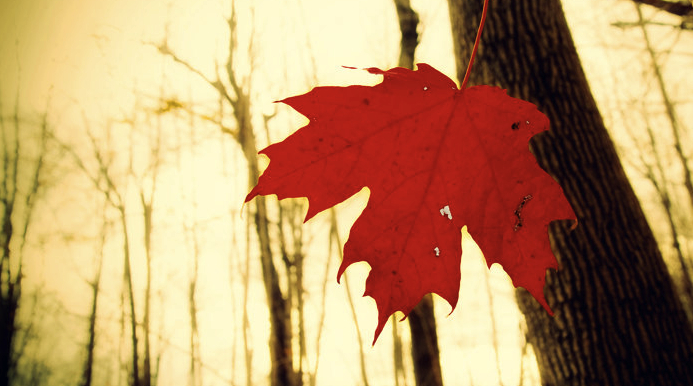 ON CANADA AND HER FREEDOMS AND UNIQUENESS...
ON CANADA AND HER FREEDOMS AND UNIQUENESS...
“We remember the personal loss, but we take the time to reaffirm the
sacrifice and service and its enduring meaning," Newton said.
“Our country blossomed on the democratic traditions secured. We profited
from the freedom of the seas on which the global economy trades. And
Canada has influenced world affairs on the respect earned.
“These are reasons why the Battle of the Atlantic remains important to us."
--------------
Musical Instruments and the History of Immigration in Canada
Canada's history as a country of immigrants has resulted in a nation rich in cultural (and musical) diversity. From the time of the earliest settlements in Canada to the present day, immigrants have brought their own music to Canada. Transplanted and cultivated in the new land, these musical traditions have developed a new life, often evolving into distinctive Canadian styles.Musical performances have served a number of important roles within immigrant communities: affirming community solidarity, asserting and reaffirming cultural identity, providing a connection with the homeland and heritage, and passing cultural knowledge on to the next generation.
Instruments that accompanied immigrants to Canada became important and functional objects for individuals, families and communities. The Canadian Museum of Civilization has collected a large number of musical instruments that reflect Canada's history of immigration and the multiple traditions of Canada's varied ethnic diversity. The following will highlight a selection of these instruments, considering their importance in historical and contemporary practices in Canadian immigrant communities.
English, French, Scottish, Irish and European Immigration (17th to 19th centuries)
One of the most prevalent musical instruments in Canada from the earliest days of settlement was the violin. Small and portable, this versatile instrument found a home in the musical life of all social strata, from the formal balls of colonial administrators and military officers, to the dances and songs of fur traders, farmers and fishermen. Immigrants from France, Scotland, Ireland, Britain and Germany all brought their own repertoire and playing styles to Canada. The violin became the instrument of choice for dance music in both English and French communities of the 17th and 18th centuries, and it continued to be used in this context in rural settings until the 1960s. "Fiddling" has a continuous history in Canada, and continues to be one of our strongest traditions.This violin [above, right], from Lac St. Charles, Quebec, was made in Canada between 1875 and 1921.
In addition to the French Canadian, Scottish, Métis, and Anglo-Canadian styles of fiddling, later immigrants from the Ukraine, Poland, Romania, Hungary and other areas of Europe also brought their own fiddling styles, instruments and traditions to contribute to the mix. One of the most beautifully decorated fiddles in the museum's collection is this Norwegian Hardanger fiddle [left], built in 1928.
The Hardanger fiddle is distinguished from the regular violin partly by its decoration, but also by its sympathetic1 strings, added for resonance, that run below the fingerboard. Its repertoire consists of folk songs, dances and bridal marches. Norwegians immigrated in substantial numbers to Canada in the late 19th century, settling on the prairies and in coastal British Columbia.
Other instruments used to accompany dance in early Canadian immigrant communities included the harmonica and button accordion. In addition to its importance in French Canadian folk traditions, the button accordion became very popular in Newfoundland, where it was the preferred instrument for dance music.
Perhaps the greatest icon of Scottish traditional music culture in Canada, the highland bagpipe came to Canada with the earliest immigrants from Scotland, who settled in Nova Scotia and Upper Canada. As a martial instrument, the highland bagpipe was used in the 18th century in Scottish regiments in Nova Scotia and Quebec. The bagpipe continued to be used as an instrument of war in the 20th century, when pipers rallied troops on the battlefield in both World Wars. This instrument [below] belonged to Pipe Major Sam Scott, a member of the Cameron Highlanders of Ottawa, who played these pipes for Canadian troops in France during World War II.
Although bagpipes are strongly associated with Scottish and Irish music here in Canada, they are also present in music cultures of European immigrants from Hungary, Czechoslovakia, Rumania, Yugoslavia and Poland. The Polish bagpipe [above], known as koziol, a bellows-blown instrument from Wielkopolska, was traditionally used to accompany dance.
Another example of a European bagpipe is the zampogna, from Southern Italy or Sicily. The zampogna was an outdoor instrument, played on religious holidays and civic celebrations. This example [right] was brought to Canada by Italian immigrant Michele Trozzolo, who settled in Toronto. He subsequently learned how to make similar bagpipes himself, and he has sold his instruments in North America and countries abroad, including Italy.
Immigrants from Poland, the Ukraine, Hungary, Italy and other countries in Eastern and Western Europe, and some from Asia as well, began to arrive in large numbers in the late 19th century, bringing many new musical instruments and traditions with them.
Ukrainians were the most numerous of the European immigrants who began to settle on the prairies at this time. By World War I, 170,000 Ukrainians had moved to Canada, most of them establishing homesteads in Alberta, Saskatchewan and Manitoba. Today, there are over 1 million people of Ukrainian descent in Canada, making them the 9th largest ethnic group in Canada. Over the years, the many Ukrainian arts councils, dance troupes and community organizations across Canada have contributed to the perpetuation of traditional Ukrainian culture in Canada.
The national instrument of the Ukraine is the bandura, a lute with a shallow oval body, a short, fretless neck and many strings (up to 30) running over the neck and across the body of the instrument. The bandura is used to accompany solo or group singing. This example [left] was built in 1962 in Ontario by Mr. Peter Stepowy, who is said to have built over 100 of these instruments.
One of the most popular Ukrainian instruments used both as a solo instrument and to accompany song and dance is the tsymbaly (sometimes also spelled cymbaly), a hammered dulcimer.
Related forms of this dulcimer with similar names can be found in Romania, Greece, Poland, Hungary, and the Baltic countries. In Hungary, a larger form of this dulcimer, known as the cimbalom, is often played as a solo concert instrument. The example below has 35 courses2 of strings.
A related instrument from Lithuania is the kankles. This example [below], made by V. Kulpavicius, has 18 metal strings, and is decorated with floral and geometric designs.
Asian Migration to Canada: Chinese, Japanese, South Asia, Korean and Vietnamese (late 19th century to late 20th century)
The wave of immigration to Canada in the late 19th century included some Asians as well as Europeans. Chinese men came as migrant workers, employed first in the gold fields of the Fraser River Valley, then in the construction of the transcontinental railway in the 1880s. Approximately 17,000 Chinese men immigrated to Canada during that time, mostly settling in the Fraser Valley and Cariboo areas of British Columbia. Today, over 1 million people of Chinese origin live in Canada, congregating mostly in large urban centers in Ontario, British Columbia and Alberta.From the earliest days of Chinese settlement in Canada, music played an important social role in Chinese-Canadian communities. In addition to providing much needed entertainment, a link with the homeland, and a context for socialization, many music societies and clubs raised funds for social relief in Canada and China. Cantonese opera, a popular form rather than an elite tradition, became a focus for such activity. By the 1870s, three Cantonese opera societies were already in existence in Victoria, B.C. Opera companies like these continue to thrive today, serving both community events and occasions for multicultural display to the broader non-Asian society.
The instrumental ensembles of Cantonese opera include a number of string, percussion and wind instruments. Some of these instruments are shown below.
Huqin is a general name for Chinese fiddle. Most huqin have 2 strings and the bow is inserted between the strings. There are many varieties used in genres of Chinese opera, including the gaohu, made of bamboo with a tubular resonator, and the erhu, a larger version made of hardwood, sometimes with a hexagonal or octagonal resonator.
Dizi, also known as the di, is a transverse flute made of a single tube of bamboo. Many sizes and varieties exist in China.
The yangqin is a hammered dulcimer, adapted from the Middle Eastern santur which was introduced into China at the end of the Ming Dynasty. It is trapezoidal in shape and is played with light bamboo beaters. The yangqin is especially popular in Cantonese ensembles.
Cantonese opera performances in Canada and China also frequently employed some Western instruments in the ensembles. The violin and saxophone were two of the most common Western instruments to be used.
Japanese immigrants to Canada also began to arrive in the 19th century; by 1900 more than 4,000 Japanese were living in British Columbia, working as labourers, fishermen and farmers. According to the 2001 Canadian census, more than 85,000 people of Japanese descent are now living in Canada, with the largest numbers residing in British Columbia and Ontario. Aside from the very visible tradition of taiko drumming which has gained popularity across the country in recent decades, traditional instruments such as the shakuhachi, koto and shamisen are known, taught and seen in contemporary performances in urban centers across Canada.
The shakuhachi is a notched, end-blown flute made of bamboo. It is simply constructed, but difficult to play. In Japan it has been used for different kinds of music, but often is associated with Zen Buddhism because of its use by wandering Buddhist priests (kumoso) in the 18th century. A solo repertoire for use in meditation was developed during this time, and this repertoire continues to be popular today, even though the shakuhachi is no longer considered exclusively (or even primarily) a religious instrument.
The koto, a plucked long zither, is another traditional Japanese instrument with a significant profile in Canada. Organizations such as the Koto Ensemble of Greater Vancouver, established in the late 1950s, have marked a resurgence in popularity of traditional Japanese music and culture, particularly on the West coast of Canada. The koto is normally placed on the floor, the performer kneeling in front of the instrument to play it. Its 13 strings are plucked with the right hand, while the left hand presses on strings to alter their pitch.
Once an instrument of the elite in Japan, the koto spread into the middle classes beginning in the Tokugawa period, and by the 19th century, it was found in private homes throughout Japan. It is an instrument played by both men and women.
South Asians3 comprise the second largest population of Asian immigrants to Canada, eclipsed only by the Chinese. Most came to Canada after the Second World War, when there was a demand for more labour, and discriminatory legislation against Asian immigration was abolished. Today, over 700,000 people of South Asian descent live in Canada with large populations in urban Ontario and British Columbia.
South Asians in Canada have maintained their traditions of classical music and dance, establishing schools and performing groups in major cities across the country. A good number of skilled performers of this music reside in Canada, and there are many performances of Hindustani and Karnatik music and dance in major cities across Canada throughout the year.
Perhaps the best known instrument from Hindustani (North Indian) music is the sitar. The sitar is a plucked lute with a long neck attached to a hollow gourd which acts as a resonating chamber. There are four melody strings, three drone strings used for rhythm and 12-20 sympathetic strings which are allowed to vibrate freely. Approximately 19 frets are placed along the neck; these are movable and adjustable according to the raga.
A related instrument is the vina, commonly found in Karnatik (South Indian) music. The vina, also known as the "Saraswati Vina" is one of the oldest instruments in India. Ancestors of the vina are found in bas reliefs on temples from the 6th and 7th centuries, but it is thought to date back to the time of the Natyasastra (a major treatise on music dated sometime between the 2nd century BCE and the 2nd century CE). The vina is very similar to the sitar, but it does not have sympathetic strings, and it is made entirely of wood. Its 24 frets are set into wax, and it is held semi-horizontally when played. The neck of the instrument shown below ends in a carved dragon's head that has been covered in gold leaf, and the balance gourd, located at the top of the instrument, has been beautifully decorated.
South Asian classical musics normally consist of three components: melody, drone and rhythm. The most common drone instrument, used in both Hindustani and Karnatik musics, is the tambura (also known as the tanpura), a tall, plucked lute, about 3 ½ to 5 feet long. The longest part is its hollow neck which ends in a bowl-shaped large gourd covered with a piece of wood. The tambura has 4 strings tuned to important pitches of the raga. It is held vertically and is strummed continually throughout the performance, providing the drone.
A similar barrel-shaped drum used in some genres of Hindustani music culture is known as the pakawaj, but the most common percussion instrument in North Indian music is the tabla. The tabla is actually a pair of drums played with the hands (one hand per drum). The higher pitched wooden drum is called the dahina (also daya) and the metal drum which provides the lower pitches is called the baya. The tabla is used for many kinds of music, accompanying vocal and instrumental genres, kathak dance and devotional music as well. In recent years, the tabla has become prominent as a solo instrument and also has been featured in many mixed World Music ensembles.
The museum possesses a number of beautifully decorated traditional Korean instruments. Perhaps the most important of these in Korean music culture is the changgo. Similar to the Japanese tzuzumi, the changgo is a double headed hourglass shaped drum, and it is the main percussion instrument of Korean music. The body is hollow, made from a single piece of wood that is usually painted and sometimes also decorated. Its two circular heads are mounted on metal hoops and laced together across the body of the drum.
The changgo is usually placed horizontally in front of the player, who is seated. The left head is struck with the performer's open hand and a bamboo stick is used on the right head, resulting in distinct timbres. This drum is used in court and folk genres, and has its own solo repertoire in samullori, a recent ensemble composed entirely of percussion instruments.
In the decades since World War II, many immigrants have come to Canada as refugees, fleeing the political upheavals of their own countries. The conflict in Southeast Asia, which reached a crisis in the 1970s, caused many in Vietnam, Cambodia and Laos to leave their homelands to settle in Western countries, including Canada. Between 1979 and 1991, over 140,000 Vietnamese refugees landed in Canada. Over 40% of them settled in Ontario, but large populations can also be found in Quebec, British Columbia and Alberta.
One of the main traditional instruments of Vietnam is the dàn dáy, a plucked lute, which is said to be found only in Vietnam. It has a trapezoid-shaped body, three strings, high frets and a very long neck, and is used to accompany singers. Formerly only played by men, the dàn dáy is considered a powerful instrument that was given to humans by the immortals.
The second dàn dáy in the museum's collection is an example of the way in which traditional instruments can be adapted to meet new needs in new contexts. In this case, the instrument has been modified by the addition of electric pick-ups to make it more suitable for popular repertoire.
Arabic, African and Caribbean Immigration
Immigration from Arabic countries across the Middle East began in the late 19th century, but has been steady only since the 1960s.Most Arabic immigrants have settled in large urban centers, such as Montreal, Toronto and Ottawa and in these cities community organizations and performing groups often promote traditional music and dance. Two well-known traditional instruments that are found throughout the Middle East are the oud and the darabukka.
The oud (also known as "ud") is a short-necked plucked lute, the ancestor of the European lute. Its body is pear shaped, and its rounded back is made from strips or "ribs" of hardwood. The three sound holes on the flat surface of the body often are highly decorative. Five courses of strings are the most common, but other configurations are possible as well. The instrument at left is an "ud arbi" from Tunisia. It has a narrow body and an oak soundboard. The oud is a feature of Tunisian classical music, used in the nouba or suite of instrumental and vocal music.
The darabukka is a single headed goblet shaped drum, common to most countries in the Middle East. It is made of wood, metal or pottery, and is usually held on the leg or hip and played with both hands. Traditionally the head is made of animal skin, but today many darabukkas have mylar, or plastic heads, since they are easier to tune and retain their pitch with changes in humidity and temperature. It is used in both classical and popular musics. The instrument below is a ceramic darabukka from Egypt.
African immigrants to Canada have been small in number until recent years, when larger waves of immigrants from French-speaking areas of Africa have begun to settle in the province of Quebec. As part of the global "Francophone" culture, musics from these African countries have found a home in Quebec society and are highlighted regularly in many public performances throughout the year, such as "Nuits d'Afrique", "Rhythme du monde", "Vues d'Afrique", the Montreal Jazz Festival and regular shows at clubs like Balattou.
Among the many traditional instruments brought to Canada from these African countries is the kora. The kora is a 21-stringed, acoustic instrument, played somewhat like a harp. The body of the kora consists of half a large calabash gourd covered with cowhide and pierced through with a long wooden pole that acts as a neck and tailpiece. Kora strings are fitted by leather bands to this pole. Once made of twisted antelope or cow hide, kora strings today are nylon (usually fishing line) which are more durable and provide a brighter sound. A kora requires special attention to the type of strings, the quality of leather, and the quality of gourd. Koras are the instruments used by griots, hereditary professional singers, instrumentalists and verbal artists, who enjoyed the patronage of kings and have played an essential role in preserving oral histories and genealogies of their countries. A number of griots from Mali and other West African countries have settled in Quebec where their kora playing continues to develop in new directions.
Almost 400,000 Caribbean immigrants are living in Canada, and the vast majority of them have come from the English speaking countries of Jamaica, Trinidad and Tobago, Barbados and Guyana. The largest communities may be found in Ontario, particularly in the cities of London, Toronto and Kingston. Caribbean music has a strong presence in Canada, especially in Toronto. The popular "Caribana" festival, one of many carnival celebrations held across Canada and currently the largest, draws an estimated one million visitors and residents each year.
One of the most distinctive and well-known instrumental ensembles from a Caribbean country is the steel pan ensemble, from Trinidad. Associated with carnival in Trinidad, the steel pan also has been included recently in the elementary school curriculum in Toronto, an example of how instruments associated with specific countries and ethnic groups are moving into mainstream Canadian society.
Conclusions:
The instruments presented here are testimony to the long and varied history of immigration to Canada. As treasured artifacts, instruments and the music performed on them have served many important roles within immigrant communities, enabling immigrants to recall their cultural heritage (or, for the younger generations, to learn about it) reaffirming and/or negotiating cultural identity and communicating it to others, and reinforcing solidarity within the community.These instruments also may take on new roles outside of the immigrant community, as they move into mainstream Canadian or even global music culture. As vehicles for communication, musical instruments will continue to have social and cultural significance for all Canadian communities.
Notes
1 Sympathetic strings resonate along with the main strings, but are not played directly.
2 A "course" of strings represents two parallel strings played together that are usually tuned in octaves or in unison.
3 South Asia is comprised of the Asian countries south of the Himalayas, including Bangladesh, British Indian Ocean Territory, Bhutan, India, Maldives, Pakistan, and Sri Lanka.
1 Sympathetic strings resonate along with the main strings, but are not played directly.
2 A "course" of strings represents two parallel strings played together that are usually tuned in octaves or in unison.
3 South Asia is comprised of the Asian countries south of the Himalayas, including Bangladesh, British Indian Ocean Territory, Bhutan, India, Maldives, Pakistan, and Sri Lanka.
Bibliography
Bégin, Carmelle. (1992) Opus: The Making of Musical Instruments in Canada. Gatineau: Canadian Museum of Civilization.
Bégin, Carmelle. (2001) Résonance: Musical Heritage of La Francophonie.
Bégin, Carmelle and Pierre Crépeau. (1989) Dance! Roots, Ritual and Romance. Gatineau: Canadian Museum of Civilization.
Brunvand, Jan Harold. (1974) Norwegian Settlers in Alberta. Mercury Series Canadian Centre for Folk Culture Studies, paper #8. Gatineau: Canadian Museum of Civilization.
Gibbons, Roy, ed. The CCFCS Collection of Musical Instruments: Volume 1 Aerophones, Volume 2 Idiophones and Membranophones, Volume 3 Chordophones. National Museum of Man Mercury Series, Canadian Centre for Folk Culture Series, Papers # 43-45. (1982, 1983, 1984) Gatineau: Canadian Museum of Civilization.
Hoe, Ban Seng. (1989) Beyond the Golden Mountain: Chinese Traditions in Canada. Gatineau: Canadian Museum of Civilization.
Huang, Jinpei and Alan P. Thrasher. (1993) “Cantonese Music Societies of Vancouver: a Social and Historical Survey,” Canadian Folk Music Journal 21: 31-39.
Kallman, Helmut, Gilles Potvin and Kenneth Winters, eds. (1992) Encyclopedia of Music in Canada. Toronto: University of Toronto Press.
King, Patrick. (Director) (1999) Bagpipe: Instrument of War [Film]. London: Westminster King Productions.
Klymasz, Robert. (1991) Art and Ethnicity: The Ukrainian Tradition in Canada. Gatineau: Canadian Museum of Civilization.
Magocsi, Paul Robert. (1999) Encyclopedia of Canada's Peoples. Toronto: Published for the Multicultural History Society of Ontario by University of Toronto Press.
Sadie, Stanley, and J. Tyrrell, ed. (2001) The New Grove Dictionary of Music and Musicians. London: Macmillan.
Bégin, Carmelle. (1992) Opus: The Making of Musical Instruments in Canada. Gatineau: Canadian Museum of Civilization.
Bégin, Carmelle. (2001) Résonance: Musical Heritage of La Francophonie.
Bégin, Carmelle and Pierre Crépeau. (1989) Dance! Roots, Ritual and Romance. Gatineau: Canadian Museum of Civilization.
Brunvand, Jan Harold. (1974) Norwegian Settlers in Alberta. Mercury Series Canadian Centre for Folk Culture Studies, paper #8. Gatineau: Canadian Museum of Civilization.
Gibbons, Roy, ed. The CCFCS Collection of Musical Instruments: Volume 1 Aerophones, Volume 2 Idiophones and Membranophones, Volume 3 Chordophones. National Museum of Man Mercury Series, Canadian Centre for Folk Culture Series, Papers # 43-45. (1982, 1983, 1984) Gatineau: Canadian Museum of Civilization.
Hoe, Ban Seng. (1989) Beyond the Golden Mountain: Chinese Traditions in Canada. Gatineau: Canadian Museum of Civilization.
Huang, Jinpei and Alan P. Thrasher. (1993) “Cantonese Music Societies of Vancouver: a Social and Historical Survey,” Canadian Folk Music Journal 21: 31-39.
Kallman, Helmut, Gilles Potvin and Kenneth Winters, eds. (1992) Encyclopedia of Music in Canada. Toronto: University of Toronto Press.
King, Patrick. (Director) (1999) Bagpipe: Instrument of War [Film]. London: Westminster King Productions.
Klymasz, Robert. (1991) Art and Ethnicity: The Ukrainian Tradition in Canada. Gatineau: Canadian Museum of Civilization.
Magocsi, Paul Robert. (1999) Encyclopedia of Canada's Peoples. Toronto: Published for the Multicultural History Society of Ontario by University of Toronto Press.
Sadie, Stanley, and J. Tyrrell, ed. (2001) The New Grove Dictionary of Music and Musicians. London: Macmillan.
------------------
Canadian Social Studies Songs
Songs About Canada's History, Prime Ministers,
Geography, and Way of Life
Songs About Canada's History, Prime Ministers,
Geography, and Way of Life
These Canadian songs are available from a variety of albums:
The Provinces and Territories of Canada
The Canadian Province Chant for Children – Mr. I
– Mr. I
The Canadian Province Rap – Joe Crone
– Joe Crone
Songs About Canada and Canadian History
Canada in My Pocket – Michael Mitchell
– Michael Mitchell
Cariboo Gold Rush – Shawna Audet
– Shawna Audet
Confederation Canada – Shawna Audet
– Shawna Audet
Fly High – Michael Mitchell
– Michael Mitchell
Foolish Frobisher – Shawna Audet
– Shawna Audet
A Great and Beautiful Country – Gary Huntbatch
– Gary Huntbatch
Groseilliers and Radisson – Shawna Audet
– Shawna Audet
Henry Hudson's Last Letter – Shawna Audet
– Shawna Audet
In Canada – Mr. I
– Mr. I
Lower Canada Rebellion Rap – Shawna Audet
– Shawna Audet
Mac the Lumberjack – Fred Gee
– Fred Gee
Maple Sugar Time – Michael Mitchell
– Michael Mitchell
Sing a Song of Canada – Kim Soleski Ward
– Kim Soleski Ward
Tom Sukanen's Dream – Shawna Audet
– Shawna Audet
Upper Canada Rebellion – Shawna Audet
– Shawna Audet
Water – Michael Mitchell
– Michael Mitchell
Traditional Canadian Songs
In English
Cape Cod Shanty – Mr. I
– Mr. I
Cariboo Road – Mr. I
– Mr. I
Farewell Nova Scotia – Michael Mitchell
– Michael Mitchell
I's the B'y – Andrew Queen
– Andrew Queen
I'se the B'y – Michael Mitchell
– Michael Mitchell
Jack Was Every Inch A Sailor – Michael Mitchell
– Michael Mitchell
Land of the Silver Birch – Mr. I
– Mr. I
Little Old Sod Shanty – Michael Mitchell
– Michael Mitchell
O Canada! – Traditional
– Traditional
Red River Cart Song – Michael Mitchell
– Michael Mitchell
In French
Au chante de l'Alouette – Michael Mitchell
– Michael Mitchell
O Canada – Traditional
– Traditional
Un Canadien Errant – Michael Mitchell
– Michael Mitchell
V'la l'Bon Vent – Michael Mitchell
– Michael Mitchell
Prime Ministers of Canada and Canadian History
First Among Equals – Kim Soleski Ward
– Kim Soleski Ward
Prime Ministers Are People Too – Shawna Audet
– Shawna Audet
Animals Native to Canada
My Dewlap (Moose Song) – Kim Soleski Ward
– Kim Soleski Ward
The Puffin Party – Kim Soleski Ward
– Kim Soleski Ward
The Canadian Province Chant for Children
The Canadian Province Rap
Songs About Canada and Canadian History
Canada in My Pocket
Cariboo Gold Rush
Confederation Canada
Fly High
Foolish Frobisher
A Great and Beautiful Country
Groseilliers and Radisson
Henry Hudson's Last Letter
In Canada
Lower Canada Rebellion Rap
Mac the Lumberjack
Maple Sugar Time
Sing a Song of Canada
Tom Sukanen's Dream
Upper Canada Rebellion
Water
Traditional Canadian Songs
In English
Cape Cod Shanty
Cariboo Road
Farewell Nova Scotia
I's the B'y
I'se the B'y
Jack Was Every Inch A Sailor
Land of the Silver Birch
Little Old Sod Shanty
O Canada!
Red River Cart Song
In French
Au chante de l'Alouette
O Canada
Un Canadien Errant
V'la l'Bon Vent
Prime Ministers of Canada and Canadian History
First Among Equals
Prime Ministers Are People Too
Animals Native to Canada
My Dewlap (Moose Song)
The Puffin Party
Canadian Folk Music
The Maple Leaf Forever, The York Boat Brigade, Feller From Fortune,
Bound Down for Newfoundland, Rolling Down to Old Maui, Star of
Logy Bay, Squid-Jiggin Ground, The Ryans and the Pittmans, and
The Greenland Whale Fisheries
Folk Music and Folk Life in Canada
by Michael Mitchell
The Bluenose, Log Driver's Waltz,
The Island (Now the official song of Cape Breton, Nova Scotia),
and the Canadian adaptation of Woody Guthrie's
"This Land is Your Land."
-----------------
Canada's
Showcase Network Has Its
www.outlandertvnews.com/2014/03/canadas-
The Showcase network in Canada is the network carrying
Outlander for all ... The Showcase network in Canada is the
network ... This entry was posted in TV Series ...
--------------
L’Encyclopédie de l’histoire du Québec / The Quebec History Encyclopedia
Music in Canada
[This article was published in
1948; for the exact citation, see the end of the text.]
Music.
The art of composition and the art of
performance together form that which we term "music". A survey
of music in Canada is therefore a record of achievement in these two
respects.
I. COMPOSITION
That
all branches of composition may be mentioned, it is necessary as a preliminary
to point out that it may be classified as (1) primitive and (2) tutored.
To the first class belong the native music (that of the North American
Indian and the Eskimo) and the folk-music. Briefly, this may be defined
as music of the solo and single idea type. As originally written, such
music was unaccompanied, and was considered sufficient unto itself.
To the second group belongs all music of the plural-idea type. This
occurs when melodies are accompanied, are developed, and are joined
to other melodies. The first type has survived through the memory of
oral tradition; the second presupposes notation and publishers.
Native Music.
Since
the North American Indian is found in the United States as well as Canada,
the native music of Canada may be considered a branch of the native
music of the continent. In recent years, both American and Canadian
governments have devoted time to its study. The results already gained
include the collection of about 3,000 records of Indian songs these
were taken in Canada-and also
the
acquiring Of much knowledge not only regarding the artistic side of
this music, but also as to the ethnological problems which the Indian
race represents. The last offers many points of interest, of which one,
noticed by Marius Barbeau, is the striking resemblance between the music
of the Indians of the North West and that of the Siberians and Chinese.
This presupposes that intercourse between Alaska and Siberia (via the
Bering strait, which is dotted with islands, is frozen in winter, and
is only 40 miles in length) was very general in bygone days, and that
its influence extended to cultural matters as well as to the exchange
of commodities. Further, the use of words, meaningless to the Indians
who sing them, but familiar to students of Buddhist rituals, the similarity
of the drums (Indian drums and Siberian drums are alike in structure
and in size), still more the similarities in the funeral rites, customs,
traits, myths, and stories which are found to exist in both countries
have led ethnologists to think that the origin of the north-western
Indian is to be found in Asia.
Apart
from ethnological considerations, two points remain which are of sufficient
general interest to be briefly considered. One is that of the characteristics
of the music itself; the second is that of its influence on composers.
The first is technical, and is too long to be treated adequately in
this article. But, briefly, some of the more important features are
(1) rhythm, which is complex and distinctive; (2) scales, which have
been conceived downwards, and which also show a likeness to medieval
tonal systems; (3) intervals, which often verge on the use of quartertones;
(4) purpose, which for the most part is that of assistance at ceremonials,
dancing, and pantomime, and of dramatic expression. Of these the rhythm,
with its freedom from the rigidity of bar lines, with its drum accompaniments-these
often maintaining regularity in time and accent, yet at cross purposes
to the song they accompany is perhaps the most characteristic. Certainly
it is a trait which tutored musicians find difficult to imitate. The
second consideration-that of influence on the course of tutored composition-is
one that has not affected Canada as yet. At the first Quebec Festival,
sponsored by the Canadian Pacific Railway and held in 1927, some treatments
of Indian melodies appeared in string quartet form. A few transcriptions
of Indian melodies into songs with accompaniments have also been published.
But so far these must be regarded as experiments only. Naturally, more
has been done in the United States. For a time, and before the coming
of "jazz", the American composer was prone to receive the
impress of Indian music as something valuable, as a germ cell on which
to build. Latterly, however, this trend seems less evident. But for
information on this, and for a bibliography of such works, the reader
is referred to the excellent article on Indian music in the
American supplement to Groves 's Dictionary of music and musicians.
Folk Music.
Canadian
folk music is mostly found in the province of Quebec. Under government
direction, and with the help of many searchers (among whom the name
of Marius Barbeau will always be remembered), some 7,000 records of
songs or versions of songs are now in safe-keeping. Most of these exist
in phonograph records, and many are to be found in the National Museum
at Ottawa. Of the points of general interest, three are important and
can be mentioned briefly. The first, that of origin, has been the subject
of mach recent research. This has shown that the greater part, perhaps
90 per cent., came with the tide of immigration which flowed from the
Loire and Normandy to the shores of the St. Lawrence between 1608 and
1673. Of the remaining 10 per cent., half have come from
France
since the seventeenth century, and the rest have been written in Canada.
It is clear, therefore, that while the bulk of Canada's folk-song repertory
is not indigenous, yet Canada provided the right conditions for its
survival. The second, which is that of general and musical character,
has likewise been the subject of much investigation. In this it has
been pointed out that the roots of this music are to be found in the
art of the jongleur; and further, that these music and verse-makers,
who flourished in France until the beginning of the seventeenth century,
showed certain characteristics which their Canadian descendants retained.
For instance, they wrote for popular rather than aristocratic appeal;
they rarely committed their writings to print; and they were profoundly
affected by their surroundings. When in Normandy they composed ballads
and narrative songs, when in the Loire they wrote more in the lyrical
style. Consequently French-Canadian songs possess similar distinctions.
Those that have been found near, and south-west of, Montreal - where
the Loire immigrants settled - follow the lyrical impulse. Those found
east of Quebec partake of the story kind. And thus we get ballads, narratives,
complaintes (tragic songs), besides love, work, exploring,
religious, and comic songs. Of the musical aspect, it may be claimed
that they are very tuneful. In many there are vigorous rhythms; in most
there is conformance to standardized scales; in many there is distinct
grace and charm. While not perhaps of such exceptional beauty as the
Irish, for instance, yet in artistic worth they can be compared to the
heritage of many other countries. The third point, which is that of
influence, is shown in published compositions bearing the impress of
the Canadian folksong. Although the appearance of French-Canadian melodies
in print is of recent date-none appeared before 1865 - yet this is already
of some importance. Fortunately much information on this is obtainable.
A bibliography, giving information not only as to books and articles,
but also as to compositions which have been inspired by this inheritance
is to be found in Folk-songs of old Quebec by Marius Barbeau,
published by the National Museum of Canada.
Canadian Composition.
In
composition, apart from native and folk music, Canada as yet has produced
very little. For this many reasons may be given. First, it is questionable
if there is the necessary environment - this implying publishers and
public, with the latter willing to accept new works as news. Second,
Canadian composers lack patrons and are too dependent on other work
for their livelihood. Third, the copious literatures of other countries
are sufficient to satisfy the needs of Canadian performers. Fourth,
Canadian temperament and character is not sufficiently homogeneous to
influence composers in the forming of national traits, or a national
school.
Nevertheless,
there has been some noted individualistic effort. In the domain of church,
choral, and organ music, Healey Willan is known throughout Canada, in
many parts of the United States, and in England. His published compositions
include over two hundred works. He is already regarded as a leader in
the movement to a return towards the older and more impersonal style
of church music. Of other noted work, much has been done by Alfred Laliberté,
Claude Champagne, Achille Fortier, Alfred Whitehead, and Sir Ernest
Macmillan. But this list by no means covers all that should be mentioned.
Much, of course, has been written in Canada which has not yet found
a publisher, and a good deal has been written by Canadians who have
settled in the United States. It is unfortunate that, apart from the
Dictionary of modern music and musicians published in 1923,
little information regarding this is obtainable from books.
Efforts
to stimulate composition by competition and prize-giving have been made
from time to time. The most recent of these is that known as the Jean
Lallemand prize. Of the value of $500, it is given annually in Montreal.
To date, however, it is impossible to say whether this, or former prizes
of a like kind, have met with real success.
A
word must be added about popular music. Those engaged on the production
of seriously minded works are very prone to scoff at what may be termed
commercial productions. Yet it is significant that this popular music
is of great appeal. In point of business, it occupies by far the larger
part of that which is printed and sold. But while Canada is alike with
other countries in this, yet little of such music has been written by
Canadian musicians. In the main the American influence - seen in the
great output of "Rag-time", "Jazz", "Blues",
"Swing-music" - has dominated the Canadian market. And except
that some of this is now printed in Canada, and that there have been
a few cases of Canadians achieving notable successes in popular songs,
and also in patriotic songs, it must be admitted that Canadian popular
music is American in style and authorship, and that Canada was the first
of foreign countries to succumb to its appeal.
In
the domain of national songs, three are familiar to Canadians. The first
is the British national anthem. The singing or playing of this at public
functions is regarded as an emblem of loyalty to the Crown. Two others
are "O Canada", written by Lavallée a little more than
fifty years ago, and "The Maple Leaf for Ever" written in
1867 by Alexander Muir .
II. PERFORMANCE
Apart
from the competitive festivals, public performance of music by the trained
executant is an art essentially belonging to the cities. Observers and
musicologists of the United States have declared that music on the continent
of America appears only as a noteworthy factor when cities reach a population
of 25,000 or more. In dealing with music in Canada, it must be remembered
that such cities are few, and that they are separated for the most part
by great distances. Added to this geographical separation is a demarcation
caused by difference of race. Ontario knows little of the musical endeavours
of Quebec, and Quebec, except at a meeting point in Montreal, has little
knowledge or interest in the doings of Ontario and the West. For such
reasons a review of musical performance in Canadian cities is difficult.
At best it can resemble a number of snap-shots, some taken at short
distance, some at long. And it is inevitable that opinion will disagree
as to the merits of those which have been chosen for review. As far
as chronological order can be traced, musical development in the cities
began with church music. Following this came the formation of musical
clubs, of choral societies, of educational efforts-these fostering at
first the teaching of singing and piano-playing and more recently, of
orchestral societies and chamber music organizations.
In
church music, the existence of a great number of non-Anglican Protestant
churches has led to the cultivation of the more personal style. This
includes the admission of men and women singers, of solo work, and the
singing of anthems both a cappella and with organ accompaniment. In
general, a high standard has been achieved. In many cases, choir-training
has proved an excellent preliminary for larger choral work, and many
choral societies can trace their inception to a successful beginning
in some particular church. In churches of the older religions, where
a more impersonal style is demanded, and where the older music is performed,
much is being done at the present time. Achievement to date, however,
is limited rather than general, this indicating that distinguished work
of this kind requires traditions which have hardly arrived in Canada
as yet, but which are rapidly being acquired.
The
organ work in church music has been considered important for many years.
A Canadian College of Organists, founded in 1909, similar in its purpose
to that of the Royal College of Organists of England, conducts examinations,
awards a diploma, and is becoming an important factor in matters relative
to church musical affairs. To the influence of the church also is to
be attributed the success of Canadian organ-builders. One firm in particular
- Casavant Frères of St. Hyacinthe , Quebec - has had the distinction
of some notable installations in the United States , and it is conceded
both by native and foreign organists that their work is of the highest
kind.
Musical
clubs, mostly founded and conducted by women, trace their origin to
the United States. They are to be found in the cities and in many towns.
A few, like the Morning Musical Club of Montreal, already can point
to over forty years of activity. Unquestionably the musical life of
many districts has been the richer for their endeavours. A difficulty
in the musical life of a new country (and one which the club tends to
mitigate) is the introduction of new artists, new mediums, and new works.
Before a certain musical-mindedness has been obtained, communities are
prone to be unresponsive to the ordinary methods of concert advertising.
But an organization with fixed membership, with certain social allurements,
is able to do much to lessen this difficulty. That this has been done,
and that the Canadian women may claim their share in the creating of
musical appreciation, and in the development of musical taste, is unquestionable.
The success attending these various women's clubs has had some counterpart
in the organizing of men's clubs of a similar nature. Most important
of these is that of the Men's Musical Club of Winnipeg, founded in 1915,
an organization which has done a great deal towards musical developments
of all kinds in that city. Of late Canadian musical clubs have been
helping student and local effort. Many give valuable scholarships that
the winners may obtain tuition in the best centres. This is of great
value because Canadian governments-federal, provincial, and civic-follow
English precedence in their dislike of monetary grants to musical enterprise.
Excepting the Quebec government, which gives an annual scholarship of
the value of $3,000, and which supports the Concerts Symphoniques de
Montreal, musical enterprise is mostly under private management. While
this avoids certain disadvantages associated with political influence,
it suffers with the vagaries of trade conditions.
Choral Singing.
Choral
singing in Canada may be considered in the front rank of Canadian musical
achievement. This is due to three things: one, the possession of good
voices; two, the presence of good choral conductors; three, the temperament
akin to that of the English, which likes democratic rather than highly
professional effort, and which will impel a body of amateur singers
to submit to months of severe drilling, when the objective is but a
short hour of triumph at the end of the season. It is with choral singing
that Canada discovered that (musically speaking) she could export as
well as import. This occurred when the Mendelssohn Choir of Toronto
successfully carried their concert-giving to the United States. The
history of this organization tells a fine achievement. Founded in 1894
by the late Augustus Vogt, it was conducted by him from that date until
1917, and since then by Herbert Austin Fricker. Besides its concerts
and festivals in Toronto, it has undertaken one tour in eastern Ontario
and Quebec, and thirteen tours (with thirty-seven concerts) in the United
States. Its programmes have been noted for the inclusion of all kinds
of choral music. Major works, old and modern, in which chorus and orchestra
are together, unaccompanied choral works, of the madrigal, motet, and
modern part-song-type-have been regular features since the society's
inception. Its early policy of engaging such orchestras as the Chicago,
Philadelphia, and Cincinnati unquestionably sowed the seed of orchestral
appreciation in the city of Toronto in which they appeared.
Among
other choral societies that have gained distinction abroad as well as
at home the following are important. First, the Winnipeg Male Choir,
founded in 1916, has had two successful tours in the United States ,
and one in eastern Canada . Its fortunes have been directed by many
conductors, of whom Hugh Ross is particularly remembered, since it was
during his régime that the society first won its wider attention
and successes. Second, the Schubert Choir of Brantford, founded in 1906
by Henri Jordan, and conducted by him since its inception, has appeared
in the United States - where it won first place in the American National
Eisteddfodd (at Scranton , Pa. , in 1929) - and has made four successful
appearances in Toronto. Third, the Canadian Choir, also of Brantford
, founded in 1929, is a smaller organization of about sixty voices.
In 1930 it accomplished a tour in England , under the baton of Frederick
Lord. Many concerts were given both in Scotland and in England , and
the choir had the distinction of competing against some of the best
British choirs at the Blackpool festival, and of winning second place
in the preliminaries and fourth in the finals. Four, the Junior Elgar
Choir of Vancouver and New Westminster has had, too, the distinction
of two journeys to England. It has also appeared at the Canadian National
Exhibition, and has won high praise in both English and Canadian cities.
Besides
the above, a number of excellent choral organizations are to be found
in different cities, which have not, however, travelled beyond Canada.
The Ulgar Choir of Hamilton , Ontario, conducted by Bruce Carey, William
Hewlett, and for one year by Roy Fenwick, has done much to create a
musical taste in that city. The Philharmonic Choir of Winnipeg, conducted
respectively by Hugh Ross, Douglas Clarke, Peter Temple, and Bernard
Naylor, has played a prominent part in musical affairs in Winnipeg -
as has also the Winnipeg Boy's Choir, which has been directed by Ethel
Kinley. Further west, the Bach Choir of Vancouver, conducted by Professor
Ira Dilworth, is regarded as one of the most important musical assets
of that city.
Orchestral
Music. Orchestral music in Canada has come much into prominence during
the last few years. The influence of American example, where in mangy
cities the orchestra is the centre of musical activities, as well as
the improvement in the technique of playing, and the discovery that
among native musicians were some with exceptional technique for conducting-all
have contributed their impress on Canadian opinion. This has been very
noticeable in Toronto and Montreal , arid to a slightly less extent
in Calgary and Vancouver. In Toronto, orchestral history records four
important organizations. The first, the Toronto Symphony Orchestra,
which started in 1908, with between seventy and eighty professional
players, and with Frank Welsman as conductor and Herbert Cox as patron,
gave regular concerts in Toronto, and occasional concerts in other towns
of Ontario, and in Quebec. The second, under the baton of Luigi van
Kunits, which eventually also took the same name, gave twilight concerts
in Toronto between 1924 and 1931. It was during this time that players
and conductor agreed to a policy of cooperation and share-receiving,
and succeeded thereby in carrying on without financial guarantees. From
1932 to 1936 a third Toronto Symphony Orchestra, formed on the nucleus
of the second, and with Sir Ernest Macmillan as conductor, has reverted
to the policy of evening concerts, and has concentrated on the performing
of major orchestral works. This last period has witnessed important
gains and successes, and has shown that public opinion has veered towards
accepting orchestral music, as the most vital of the musical arts. It
has also witnessed a fourth orchestral organization, known as the Promenade
Symphony Orchestra, this conducted by Reginald Stewart, which began
concerts in the 'Varsity Arena in 1934, and which had already completed
three seasons. This last, begun more or less as a relief measure (that
of giving work to musicians during the summer months, and operated on
a share basis) has been remarkably successful. Planned on good but popular
lines, these concerts have attracted a general public rather than a
musical minority. They have shown also that concert-giving may extend
into the summer; for in both 1934 and 1935. attendances were far in
excess of any hitherto known in the Dominion.
The
smaller orchestra, once an adjunct to the theatre and "silent"
picture theatre, suffered with the introduction of the talking machine.
The days when " Main Street " had an orchestra seem to be
past, in Canada as elsewhere. For except in a few cases, where the old
theatre still exists, or where large theatres operate both pictures
and vaudeville, these smaller bands have ceased to exist.
In
chamber music, Canadian effort has come to the fore in recent years.
String quartets and other ensemble organizations of Toronto and Montreal
began regular concerts and short tours more than thirty years ago. In
1924 a more important organization known as the Hart House Quartet was
formed in Toronto , and through the efforts of the Hon. Vincent Massey
became the recipient of an endowment - this placing it on a similar
footing to other quartets which had come into existence in the States.
To Canada this gave a quartet which could give chamber music its first
attention. As a result Canadian effort in this has extended abroad,
for this organization already has visited different parts of Canada,
the United States, England, and the continent of Europ .
To
conclude this brief survey of concert work in Canada, two points should
be mentioned. First, concertgiving is dependent on the existence of
concert halls. In earlier days there were very few; and churches, skating
arenas, and theatres (the last very unsuitable) were the only places
available. With the erection of Massey Hall in 1892 (a gift to the city
of Toronto by the late Hart Massey), the building of proper concert
auditoriums in Canada may be said to have begun. Since then further
buildings, which have been completed, and which are proving very valuable,
are Darke Hall (a gift to Regina from F. N. Darke) in 1929, the Civic
Auditorium (a gift to Winnipeg from the federal, provincial, and civic
governments) in 1932, the Eaton Auditorium, in Toronto, Hart House Theatre,
in Toronto, the Little Theatre of Ottawa, and the various concert halls
to be. found in some of the large railway hotels. Secondly, attention
should be called to the Musical Protective Association, which is the
result of American influence, and is far-reaching in its extent. With
the exception of parts of Quebec, most of the Canadian unions are branches
or "locals" of the American Federation of Musicians, with
headquarters in New York . The policy pursued, like that of most labour
unions, s one of control of prices by the enforcement of the closed
shop. In general, it affects instrumentalists rather than singers. While
criticism against Canadians submitting to American labour jurisdiction
is sometimes heard, it does not seem likely that there will be any change
in the immediate future. Until the coming of the "talkie"
and machine-music, the American unions were able to secure very high
wages for its members. The memory of this, together with the sense of
collective security, seems to point to the continuance of this alliance.
Educational Work.
This
may be divided as follows-that done (1) by the universities, (2) by
the musical colleges, (3) by the schools, (4) by the private teachers.
The first functions more in examination work than in actual teaching,
though a trend towards giving instruction in theoretical work is becoming
more general. Six universities give degrees in music, these being Toronto,
McGill, Dalhousie, Bishops, Acadia, and Mount Allison. As in Englan,
the requirements in the main deal with the technique of composition.
Most of the universities accept music as an optional subject in their
entrance examinations. Formerly this was of a theoretical kind. Recently,
however, practical music was included. Of musical colleges there are
many. The two largest are the Toronto Conservatory of Music, which celebrates
its fiftieth anniversary in 1937, and the McGill Conservatorium. The
first is now a department of the University of Toronto ; the second,
of McGill University. Both these colleges give diplomas, and their examinations
are conducted in all parts of the country. In general, college instruction
is managed on different lines to those in force in some of the principal
English colleges. There the desire is to provide for the all-time student-this
embracing instruction in a principal and secondary studies. Here, it
seems more necessary to cater to the part-time or specializing student
and to allow him choice in that which he undertakes. A broadening influence,
however, is that of the college diploma, this requiring a general knowledge
of the grammar of music and its developments, besides proficiency in
a special study.
The
teaching of music in the schools varies according to district and province.
The present signs are towards its greater use and towards a more liberal
recognition of its educational value. Classsinging is fairly general
in the elementary schools, and the efforts of the Canadian Bureau for
the Advancement of Music are being directed towards the forming of class
instruction in instrumental work.
Private
teaching, including the work of those who give private lessons at colleges,
has advanced to a high level. Prior to the Great War, many Canadians
studied in Europe . With the results accrued and with the coming of
a few noted European performers and teachers, this necessity seems to
be lessening. To date the best achievements have been done in piano
work. Incidentally the great interest in piano work has resulted in
the manufacture of pianos in Canada . Among notable firms engaged in
this work are Heintzman of Toronto, Mason and Risch of Toronto, Sherlock
Manning and Weber, both of Ontario, and Lesage and Quidoz, both of Quebec.
Competitive Festivals.
Though
of recent growth, this movement already has become a very important
factor in Canadian musical work. Its origin belongs to England, where
it began about forty-five years ago. In Canada, the three prairie provinces
were first in the field. Alberta took the lead with a festival in Edmonton
in 1907. Saskatchewan followed in 1909, and Manitoba in 1919. Ontario
and British Columbia both began in 1923, while Nova Scotia, the last
comer, held its first festival at Halifax in the spring of 1935. In
1926 the necessity for cooperation in the matter of adjudicators led
to an amalgamation of the four western provinces into an interprovincial
association. This has become affiliated with the British Federation
of Musical Competition Festivals, a federation incorporated by an Act
of parliament in 1921, which now claims an interest in over two hundred
inter-empire major festivals.
Of
the results shown by the evidence to date, it would seem beyond question
that Canadians, like the English, respond to the introduction of the
competitive element in their musical art. This is shown in two ways.
First, with the notable exception of Toronto, where the initial experiment
failed, and where it has not been tried again, many cities show a great
increase in their figures. Entries of competitors, classes, and audiences
have increased from small to large numbers. Secondly, smaller towns,
where musical activities were usually confined to teaching and the occasional
or rare visit of a concert party from without, have followed in step,
and now have well-organised festivals of their own. Statistics from
Alberta, for instance, show that besides two provincial or major festivals
held in the cities, there are now ten minor or local festivals occurring
in all parts of the country, even including the Peace river district.
Saskatchewan likewise can point to two provincial festivals and twelve
"locals", these also distributed over a wide area. Similar
conditions exist in Manitoba and British Columbia, where the figures
point to one "provincial" and six "locals". In Ontario,
the movement has shown progress in the towns, but not in the cities.
So far, however, a more local policy has been in evidence. Towns work
independently of each other, with their respective local committees
appointing the adjudicators. In all cases, however, they claim a growing
interest. It is beyond dispute, therefore, that the movement has produced
decentralization, and has stimulated musical interest.
Opera.
In
opera little has been accomplished. So far Canadian opinion has shown
a tendency to follow English opinion, which, in the main, finds the
conventions of grand opera somewhat foreign and unnatural, but which
delights in light opera with its compromise between both speech and
song, and gayety and art. In the largest cities, notably Toronto, a
few sporadic efforts to perform opera with native singers and players
have been made from time to time. These cities have also been visited
by opera companies from the United States. It should be added, however,
that at the present time the trend of opinion seems to indicate that
opera appreciation may be on the increase. But monetary difficulties
(opera is the most expensive of the arts) and the absence of opera houses
are still difficulties which have to be overcome.
Radio.
In
company with many other countries, Canadians have become radio listeners.
The history of Canadian radio control with its problems of private versus
government managements will be treated elsewhere. See Radio. Musically
its effects have shown that American influence is very noticeable. Both
in light and serious programmes the excellent from without, such as
programmes from the United States , rather overshadows the good from
within. There is evidence, however, to show that governments are aware
of some of the disadvantages that this incurs. As a matter of history
it may be mentioned that the first Canadian broadcast occurred in Toronto
in 1922, and was under the direction of the Daily Star, and
that the first programme of Canadian music to be given an empire-wide
broadcast was one performed by the British Broadcasting Corporation
in 1935.
Conclusion.
In
conclusion, and as a summary, it is necessary to resort to comparison.
If the golden age of German music - that of the nineteenth century -
be taken as an example, it is noticed that the German people of that
day possessed all the elements that were needed. They had their great
composers, writing in the manner of their own schools; they had publishers
willing to print these works, and a public willing to consider such
publications as news; they had their great performers; they had their
great writers, explaining and . popularizing the claims of music, and
awakening interest in the music of the past; they had their conductors,
fine concert auditoriums, excellent teachers and schools, and governments
willing, often enough, to free their opera houses and concert organizations
from financial anxiety. Turning to Canada , we can see that music here
is far from that stage. Instead of being "settled in fullest capacity";
it is rather "in course of construction". But the abundance
of native talent as shown already in performance, the good teaching
facilities that already exist, above all the change in the attitude
of educational leadersnow more tolerant to the view that music may be
ranked as an educational subject-all go towards the view that the outlook
is bright. Canadians are becoming more musically-minded, and that is
proof that Canadian musicians possess the most essential of qualities,
that of vitality.
Bibliography.
Articles or books dealing with the history of music in Canada are not numerous; but reference should be made to the, following: Mrs. S. Frances Harrison, Historical sketch of music in Canada, in J. Castell Hopkins (ed.), Canada: An encyclopedia of the country (Toronto, 1898); O. G. Sonneck, "A survey of music in America", in Essays in music (New York, 1916) ; E. Z. Massicotte and M. Barbeau, Chants populaires canadiens (Journal of American Folk-Lore, 1919) ; Leo Smith, "A survey of music in Canada," in Handbook of Canada (Toronto, 1924); L. Spell, Music in New France in the seventeenth century (Can. hist. rev., 1927); M. Barbeau, Folk songs of French Canada (Music and Letters, 1932), Songs of the north west (Musical Quarterly, 1933), Asiatic survivals in Indian songs (Musical Quarterly, 1934), The Siberian origin of our north west Indians (Proceedings of the Fifth Pacific Science Congress, 1934), and Folk-songs of old Quebec (Anthropological Series, Bulletin No. 16, Ottawa, 1934) ; "G Sharp Minor" (pseud.), Crescendo: A business man's romance (Winnipeg, 1934); and the article on "Indian music" in Grove's Dictionary of music, and musicians (New York, 1935). In the Toronto Mail of December 21, 1878 , there was printed a valuable survey of Music in Toronto, covering the half-century from 1828 to 1878. In 1936 ten articles covering the works of noted Canadian composers appeared in the Toronto Globe (May 30-August 29).Source: Leo SMITH, "Music", in W. Stewart WALLACE, ed., The Encyclopedia of Canada, Vol. IV, Toronto, University Associates of Canada, 1948, 400p., pp. 363-372.
----
Trailer Park Boys talk new movie, upcoming Netflix episodes

Alongside the fight to keep the f-bombs coming, the movie features Roach as a drunken Swearman, who is very different from his quieter gut-tastic Trailer Park character Randy. Read More
---
The ABCs of Canadian film

The ABCs of Canadian film is your crash course in
the essential Canadian cinema. From the blood-soaked horror movies of
the tax shelter years to the masterworks of Atom Egoyan and David
Cronenberg, it’s everything you need to know about Canada at the movies,
in 26 letters.

The Canadian Arctic on film
Pop quiz: What makes up about 40 per cent of Canada’s landmass, but probably less than one per cent of our own films? Hint: It’s on our money, and every once in a while Stephen Harper likes to plant a flag on it. Read More
Why are most bilingual movies an ‘epic fail’ in Canada?
For a country that proudly boasts two official languages and stamps them side by side on everything from road signs to product packaging, it’s vraiment étonnant how rarely French and English have met in Canadian movies. Read More
Canadian sci-fi movies, cubed
Imagine suddenly waking up on the floor of an unfamiliar windowless room, dressed in a drab industrial uniform you’ve never seen before, with no idea how you got there. Or how to get out. Read More
Gynecological horror: David Cronenberg’s Dead Ringers
If you ever thought Canadian movies were boring, I’ve got two words for you. Dead. Ringers. Read More
Atom Egoyan: The golden boy of Canadian film
Atom Egoyan is the poster boy for highbrow Canadian film. And you might say Exotica is the poster child for Atom Egoyan. Read More
Just give’r: The best in Canadian mockumentaries
I wanted to like Fubar. I really did. But This is not Spinal Tap. The now legendary mockumentary has become an everyman’s cult hit, spawning a successful bigger budget sequel that solidified its place in Canadian lowbrow culture. Read More
How Canada funded a ‘porn flick’
If you paid taxes in the mid ’90s, you helped fund what some people swear is a porn movie.It’s called Bubbles Galore, a feature film that, depending on who you ask, is either a soft-core porn flick masquerading as satire, or a “spicy, comic look at the porn business” with a feminist message. Read More

A brief history of Canadian horror on film
The Great White North has been a prolific producer of some of the best films the genre has to offer, with decades of films at your bloody fingertips. So where do I start? How about the beginning … Read More
Discovering Xavier Dolan: Canada’s ‘it’ director
This is one Canadian filmmaker who is red-hot right now. Montreal’s Xavier Dolan is Canada’s “It” director: the Mick Jagger of Cannes, the new gun in town. … Read More
No faith required: Denys Arcand’s Jesus of Montreal
I’ll admit Denys Arcand’s Jesus of Montreal intimidated me at first. We’re talking about an iconic film, and a filmmaker whose reputation precedes him. All I could think before I pressed play were the classic English-Canadian fears about a French-Canadian movie: What if it’s too artsy? What if something gets lost in translation? What if I don’t “get” it? … Read More
How ‘Cancer Boy’ killed The Kids in the Hall movie
Despite the star power, Kids in the Hall: Brain Candy tanked at the box office, grossing a laughless $2.6 million — less than half the film’s original $7 million budget. So what happened? Two words: Cancer Boy. … Read More
Last Night: A very Canadian take on the apocalypse
At midnight, the world will end. How will you spend your final hours?That’s the concept behind Last Night, a quirky, sometimes even lighthearted, Canadian end-of-the-world movie following an ensemble cast of characters through their final hours on Earth. … Read More

The Canadian kickstart to Bill Murray’s career
Are you ready for the summer?Directed by a then-relatively unknown Canadian filmmaker named Ivan Reitman and starring a then-unproven actor named Bill Murray, Meatballs went from the little-comedy-that-could to a movie so successful and influential, it spawned its own sub-genre.. … Read More

Early greatness in Canadian film
Nobody Waved Goodbye is just one of those essential Canadian films. With literally no script, a micro budget, and three weeks of filming in Toronto, the NFB created what you might call the genesis of the Canadian cinematic identity.Funny, then, that it had to be embraced by the U.S. before we even took notice of it. … Read More

Revisiting Outrageous!, Canada’s groundbreaking drag film
When it comes to drag cinema, Canada is queen.Long before RuPaul or Priscilla, Queen of the Desert, when drag on film was the domain of straight actors wearing bad wigs for cheap laughs, there was the 1977 Canadian Outrageous! … Read More

Bruce McDonald’s Pontypool: Canadian zombies, eh
Hollywood zombie movies – eat your brains out, because Canadian director Bruce McDonald’s 2008 film Pontypool is an undead horror flick like you’ve never seen.Like an homage to the pre-television age radio dramas, it’s one part Twilight Zone, one part 28 Days Later, and all Orson Welles. … Read More

Quest for Fire: Ron Perlman’s Canadian kickstart
I know what you’re thinking: “Quest for Fire is Canadian?”Believe it. Partially shot and produced in Canada, and starring Edmonton-born actress Rae Dawn Chong, this 1981 prehistoric epic is a kind of The Three Stooges-meets-The Clan of the Cave Bear. … Read More

Resident Evil: Canada’s film industry goes gaming
Once dismissed as the domain of grade school kids and grown-up nerds, video games are now very much in the mainstream entertainment playbook. They’re on our TVs, our smartphones, and lately, our movie screens. … Read More
Sadness in monochrome: The films of Guy Maddin
Set in the 1930s, after Winnipeg is voted the World Capital of Sorrow for the fourth year in a row, it opens with local beer baroness Lady Port-Huntly (Isabella Rossellini) announcing an international contest to find the saddest music in the world. It’s a branding stunt, aimed at the soon-to-be-drinking-again U.S. prohibition market. Her pitch? “If you’re sad, and love beer, I’m your lady.” … Read More
The Trailer Park Boys: A Canadian screen dynasty
What does the rest of the world think of when they hear the word ‘Canada’? Until recently it’s been winter, Mounties and milk in a bag. Well, thanks to a trio of guys from the Maritimes, we’re finally associated with something cool (no offence, mounted police): The Trailer Park Boys. … Read More
A Universe of film: 10 great NFB shorts
This year the National Film Board of Canada turned 75. With more than 90 Genie awards and 72 Oscar nominations to its name, the NFB has been producing profound, entertaining and influential works of film since the Second World War. It shows no signs of slowing down in old age.. … Read More
Inside the Videodrome: David Cronenberg’s body horror
Body horror is exactly what it sounds like: disease, mutilation, rebellion of the flesh and all the creepy-crawly grossness you can ever imagine. And if the genre has a magnum opus, it would be Videodrome. … Read More
Deepa Mehta: Making Water under fire
How many directors have to stare down death threats and violent mobs just to get their movies made?For Indian-Canadian director Deepa Mehta, this was the grim reality she faced when making Water – the critically acclaimed 2005 film about the treatment of widows in Indian society. … Read More

Canuxploitation: A hidden history of Canadian genre films
What if I told you that there’s a dark corner of Canadian cinema that’s all about boobs, blood and psycho killers? It’s called Canuxploitation and it’s anything but bland. … Read More
Definitely not the opera: Sook-Yin Lee’s Year of the Carnivore
Sook-Yin Lee is what you might call a Canadian renaissance woman.Her first film, Year of the Carnivore — which premiered at the Toronto International Film Festival in 2009 — also defies being pigeonholed. It’s hard to describe without using the words “quirky” or “indie.’ … Read More
Zero Patience: The Canadian musical comedy about AIDS
What happens when you mix early ’90s dance music, Andrew Lloyd Webber-style theatrics, and perhaps the most infamous disease of the last 50 years? You get John Greyson’s Zero Patience – one of the strangest films you’re ever likely to see. … Read Morehttp://metronews.ca/abcsofcanadianfilm/
----------------------
--------------------
CANADA LOVES THEIR BIKERS....
Hardy bikers assemble for blessing
With spring slow to take hold, turnout for annual event sparser than usual
FRANCIS CAMPBELL TRURO BUREAU
fcampbell@herald.ca @CH_HubBub TRURO — The weather thwarted the leather.
Some 530 bikers gathered at Victoria Park in Truro at noon Saturday for the Blessing of the Bikes, the almost-annual seasonopening motorcycle rally that attracted 3,300 riders last year.
“A lot of people don’t ride if it’s less than 10 degrees," one biker offered about the relatively poor turnout.
“Monday, I still had three feet of snow in my backyard," said Lloyd (Animal) Rector of Bible Hill, the unofficial organizer of the 29th May rally at Victoria Park. “It’s cold for riding."
But biker leather, from jackets to boots and chaps, was out in force.
From the podium, Rector recalled a time not long ago when bars in Truro and beyond wouldn’t permit groups of bikers onto the premises and when only one campground in Colchester County would allow groups of more than two bikers to spend the night.
“We’ve come a long way," Rector said.
That long way was marked by the grey hair, grizzled beards and weathered faces visible at the park Saturday.
“There’s all kinds of ages (riding)" said Roy Kellock, 57, of Milford, who was making a 10th appearance at the Truro rally. “There are a few people in their 70s and 80s still driving around."
Rector agreed that riders come from every demographic.
“It’s a growing lifestyle. We probably doubled the number of registered machines on the road in the Atlantic provinces over the last five years. The long and the short of it, we use less of everything. We’re easier on the roads, we don’t tear them up as much. We use less fuel in most cases. You see and enjoy more when you’re on the bike. You smell more, you see the trees and you see the flowers. I sound like a guy from the ’60s."
Or maybe a guy approaching or in his 60s, although Rector didn’t reveal his age.
“Old enough to know better, young enough to resist." Rector, who explained that his children tell him he has enough bikes and parts to make 40 motorcycles, downplayed his role in organizing the rally.
“It’s the unofficial first rally of the season. It’s taken a life of its own. It’s camaraderie, we’ve all been sitting watching the tube all winter, waiting for the snow to go. We get to come here, socialize, see what everybody’s been up to, what changes they made to their sled, which rallies they’re going to."
The camaraderie played out in handshakes and hugs as bikers who may have not seen one another for months or years renewed acquaintances.
During the rally, bikers passed the helmet to collect money to pay some of the costs of the rally, which included a band on the park stage and some games and other activities. The regular bike parade was cancelled this year.
Some of the clubs from around the Maritime provinces were recognized and Dwayne from Saint John, N.B., was recognized as the biker who came the longest distance for the rally, 347 kilometres.
“I don’t know his last name, but he wins it every year," Rector said.
But the day was mostly about rekindling past friendships and getting out on the road.
“The freedom," Kellock said of why he and his wife, Anna, get aboard his 2004 Roadster. “We basically stay around here and do some rallies. Work gets in the way, but you have to pay for the gas."
Truro Mayor Bill Mills offered a town welcome, a bikers blessing was recited and Rector urged riders to help each other out if they experience trouble on the road.
“It doesn’t matter who you are or what you ride," Rector said. “We’re all out there together. We’re a brotherhood and a sisterhood.
“Have a good riding season."

Motorcycle riders gather at Victoria Park in Truro for the Blessing of the Bikes event, the unofficial first biker rally of the season.
FRANCIS CAMPBELL • Truro Bureau
---------------
CANADA LOVES OUR TROOPS
BATTLE OF THE ATLANTIC
Epic struggle, loss of life remembered
STEVE BRUCE STAFF REPORTER
sbr uce@herald.ca @Steve_Courts
Hundreds gathered at Halifax’s Point Pleasant Park under sunny skies Sunday for the annual Battle of the Atlantic ceremony.
This is the 70th anniversary of the end of the battle, which is commemorated every year on the first Sunday in May.
Rear Admiral John Newton, in his remarks, called the battle one of the most epic moments in Canada’s history.
“It was a story of human endeavour that took the lives of 72,000 Allied merchant and naval sailors and airmen," Newton said.
“It was not an insignificant, long-ago conflict consumed as irrelevant in the march of time. Indeed, it remains as part of our living consciousness. . . . Veterans of it still live and their children painfully remember the physical and invisible injuries of their returning parents."
The Battle of the Atlantic was the longest single campaign of the Second World War. Between September 1939 and May 1945, 4,234 Canadian sailors, airmen and members of the merchant navy died defending shipping routes across the Atlantic Ocean between North America and Europe.
On average, German U-boats sank a ship a day in the Atlantic during the war, accounting for 69 per cent of the Allies’ shipping losses.
The tide turned in May 1943, when 41 U-boats were lost in the Atlantic.
All U-boats were withdrawn from the Atlantic after those losses for training and fitting of new equipment and they never regained their dominance.
About 250 members of the Royal Canadian Navy joined military and merchant navy veterans for Sunday’s ceremony at the Sailors Memorial. Other veterans were aboard HMCS Halifax, which was anchored offshore, to bid farewell to recently deceased shipmates.
“We remember the personal loss, but we take the time to reaffirm the sacrifice and service and its enduring meaning," Newton said.
“Our country blossomed on the democratic traditions secured. We profited from the freedom of the seas on which the global economy trades. And Canada has influenced world affairs on the respect earned.
“These are reasons why the Battle of the Atlantic remains important to us."
Earle Wagner, who was in the merchant navy, said the ceremony stirred a lot of memories from wartime.
“There was a tremendous loss of life in the merchant navy," said the 91-year-old Halifax man.
“We lost 72 ships and we lost approximately 1,600 men and women. I lost friends. I lost family."
Wagner, who worked mainly on oil tankers during the war, was never on a ship that was torpedoed but saw countless other vessels that had been hit.
“I was lucky," he said.
Wagner sailed on Imperial Oil ships for a total of 17 years, working his way up from an ordinary seaman to a captain.

Leading Seaman Karl Racine stands vigil during the Battle of the Atlantic memorial ceremony Sunday at Point Pleasant Park.
TED PRITCHARD • Staff
CANADA LOVES OUR TROOPS
BATTLE OF THE ATLANTIC
Epic struggle, loss of life remembered
STEVE BRUCE STAFF REPORTER
sbr uce@herald.ca @Steve_Courts
Hundreds gathered at Halifax’s Point Pleasant Park under sunny skies Sunday for the annual Battle of the Atlantic ceremony.
This is the 70th anniversary of the end of the battle, which is commemorated every year on the first Sunday in May.
Rear Admiral John Newton, in his remarks, called the battle one of the most epic moments in Canada’s history.
“It was a story of human endeavour that took the lives of 72,000 Allied merchant and naval sailors and airmen," Newton said.
“It was not an insignificant, long-ago conflict consumed as irrelevant in the march of time. Indeed, it remains as part of our living consciousness. . . . Veterans of it still live and their children painfully remember the physical and invisible injuries of their returning parents."
The Battle of the Atlantic was the longest single campaign of the Second World War. Between September 1939 and May 1945, 4,234 Canadian sailors, airmen and members of the merchant navy died defending shipping routes across the Atlantic Ocean between North America and Europe.
On average, German U-boats sank a ship a day in the Atlantic during the war, accounting for 69 per cent of the Allies’ shipping losses.
The tide turned in May 1943, when 41 U-boats were lost in the Atlantic.
All U-boats were withdrawn from the Atlantic after those losses for training and fitting of new equipment and they never regained their dominance.
About 250 members of the Royal Canadian Navy joined military and merchant navy veterans for Sunday’s ceremony at the Sailors Memorial. Other veterans were aboard HMCS Halifax, which was anchored offshore, to bid farewell to recently deceased shipmates.
“We remember the personal loss, but we take the time to reaffirm the sacrifice and service and its enduring meaning," Newton said.
“Our country blossomed on the democratic traditions secured. We profited from the freedom of the seas on which the global economy trades. And Canada has influenced world affairs on the respect earned.
“These are reasons why the Battle of the Atlantic remains important to us."
Earle Wagner, who was in the merchant navy, said the ceremony stirred a lot of memories from wartime.
“There was a tremendous loss of life in the merchant navy," said the 91-year-old Halifax man.
“We lost 72 ships and we lost approximately 1,600 men and women. I lost friends. I lost family."
Wagner, who worked mainly on oil tankers during the war, was never on a ship that was torpedoed but saw countless other vessels that had been hit.
“I was lucky," he said.
Wagner sailed on Imperial Oil ships for a total of 17 years, working his way up from an ordinary seaman to a captain.

Leading Seaman Karl Racine stands vigil during the Battle of the Atlantic memorial ceremony Sunday at Point Pleasant Park.
TED PRITCHARD • Staff
--------------------

Resources, Documents and Studies on the History of Franco-Americans and the Emigration of French Canadians to the United States
Ressources, documents et études sur l’histoire des Franco-Américains et l’émigration des Canadiens Français vers les Etats-Unis trouvés sur le web
Claude Bélanger,
Department of History,
Marianopolis College
ALH = American Life Histories [http://lcweb2.loc.gov/ammem/wpaintro/wpahome.html]
CNBNQ = Collection numérisée de la Bibliothèque nationale du Québec [http://www2/biblinat.gouv.qc.ca/]
ECO/NML = Early Canada On Line/Notre mémoire en ligne [http://www.canadiana.org]
MOA = Making of America [http://library5.library.cornell.edu/moa]
Documents from the CNBNQ collection can take a considerable amount of time to download depending on the speed of your connection and the size of the file. Entire books are downloaded.
Les documents de la CNBNQ peuvent requérir une période considérable de temps pour être téléchargés. Le temps requis dépend de la vitesse de votre modem et de la grosseur du fichier. Des livres au complet sont téléchargés.
Early Canada On Line is a large digital collection of primary sources in Canadian history produced by the Canadian Institute for Historical Microreproductions. An image has been made of each page of the books that the collection contains. Thus, consultation of a large section of a book is time consuming but rewarding considering the richness of the collection. There is a searchable index by author and subject.
Notre mémoire en ligne est une grande bibliothèque numérique de sources primaires en Histoire du Canada. Cette collection a été préparée par l’Institut canadien de microreproductions historiques. Chaque page est une image du texte original. Donc, la consultation d’un livre au complet requière un somme de temps considérable; cependant, la richesse de la collection rend l’exercice valable. Un moteur de recherche permet, entre autres, de chercher par titre et auteur.
Making of America is a large digital library of primary sources in American social history from Cornell University. It makes available more than 250 books and a broad spectrum of XIXth century periodicals yielding over 100,000 journal articles. As in Early Canada on line, each page is an image. Again, patience will be rewarded.
America Life Histories are the scanned manuscripts from the Federal Writers’ Project, 1936-1940.
Additional Personal History of Steve Comeau, 1938-39. ALH
American-French Genealogical Society, French Canadian Surnames: Variants, Dit, Anglicization, etc.
Beaugrand, Honoré, [1848-1906], Jeanne la fileuse : épisode de l’émigration franco-canadienne aux Etats-Unis, Fall-River, 1878, 300p. CNBNQ
Beers, W. George, « Pictures from Canada », in Scribners Monthly, an Illustrated Maganine for the People, Vol. 2, No 3 (September 1871): 449-461. MOA
Beers, W. George, « The Canadian Mecca », in The Century : A Popular Quarterly, Vol. 24, No 1 (May 1882): 1-16. MOA
Bélanger, Damien-Claude, Canada, French Canadians and Franco-Americans in the Civil War Era, 1861-1865
Bélisle, Alexandre, [1856-1923] ; avec une préface par J.-G. Le Boutillier, Histoire de la presse franco-américaine : comprenant l'historique de l'émigration des Canadiens-français aux États-Unis, leur développement, et leurs progrès : cet ouvrage contient aussi un historique des journaux publiés depuis 1838 jusqu'à nos jours, les biographies des journalistes, défunts et vivants, et un supplément sur les journaux publiés par des Français à New-York, en Louisiane et ailleurs,Worcester, Mass. : Ateliers typographiques de "L'Opinion publique", 1911. 434 p., [46] f. de pl.(CNBNQ)
Bender, Prosper, « The Annexation of Canada », in The North American Review, Vol. 139, No 332 (July 1884): 42-51. MOA
Bender, Prosper, « The French Canadian Peasantry », in The New England Magazine, Vol. 11, No 1 (September 1891) 109-121. MOA
Bender, Prosper, "The French Canadians of New England", in The New England Magazine, Vo. 12, No 5 (July 1892): 568-569. MOA
Boucher, Henry, French Canadian Textile Worker, 1939. ALH
BOUCHER, Michel. L'ouverture et la fermeture de la frontière canado-américaine au Madawaska entre 1870 et 1997 vue à travers les mariages interfrontaliers, B.A. thesis, Department of Geography, Université Laval, 1999, 75 pages. [PDF format]
Bourgeois, Patrick, Les Franco-Américains et les politiques assimilatrices du clergé irlando-américain
Carroll, Robert C., "Where French is not a Foreign Language: Franco Americans and the State and University of Maine" in ADFL Bulletin, Vol. 11, No 4 (May 1980) 17-25 [Contains data for selected counties and towns of New England and Louisiana for population with French mother tongue]
Chamberlain, Joseph Edgar, "The Foreign Elements in our Population", in The Century; A Popular Quarterly, Vol 28, No 5 (September 1884): 761-771. MOA
Chandonnet, Thomas-Aimé, [1834-1881], Notre-Dame-des-Canadiens et les Canadiens aux Etats-Unis, Montréal, imprimé par George E. Desbarats, 1872, XVI-171p. CNBNQ
Chenard, Robert E., Historical Perspective on Waterville’s 19th Century French Canadians.
Chenard, Robert E., Anglicized French Surnames.
D’Entremont, Clarence J., Acadian Survival in New England.
Dessaulles, L. A., [1819-1895], Six lectures sur l’annexion du Canada aux Etats-Unis, Montréal, P. Gendron, 1851, 206p. ECO/NML
Diocese of Manchester (History).
« Excursion to Canada », in Putnam’s Monthly Magazine of American Literature, Science and Art, Vol. 1, No 2 (February 1853): 179-185. MOA
« Excursion to Canada », in Putnam’s Monthly Magazine of American Literature, Science and Art, Vol. 1, No 3 (March 1853): 321-329. MOA
Farnham, C. H., "The Gibraltar of America (Quebec City)", in The Century; A Popular Quarterly, Vol. 24, No 6 (October 1882): 840-850. MOA
Farnham, C. H., "The Canadian Habitant", in Harper’s New Monthly Magazine, Vol. 67, No 399 (August 1883): 375-393. MOA
Farnham, C. H., "Quebec", in Harper’s New Monthly Magazine, Vol. 76, No 453 (February 1888): 356-373. MOA
Farnham, C. H., "Montreal", in Harper’s New Monthly Magazine, Vol. 79, No 469 (June 1889): 83-99. MOA
Farrer, Edward, « The Habitant of Lower Canada », in The Atlantic Monthly, Vol. 48, No 290 (December 1881): 771-780. MOA
Franco-American Database project [University of Albany]
Franco-American Grandmother (Victoria Langlois). ALH.
Franco-American Heritage Collection of the University of Southern Maine (Lewis-Auburn College)
Franco-American Resources
Francophonie nord-américaine [CEFAN]
French Canadian Heritage Society of Michigan.
French-Canadian Genealogical Research in Houghton County, Michigan
French Canadian Textile Worker, Rhode Island, 1939. ALH
French Canadians in the 1842 Census of Oregon
Frechette, Annie Howells, "Summer Resorts on the Saint Lawrence", in Harper’s New Monthly Magazine, Vol. 69, No 410 (July 1884): 197-210. MOA
Gagné, Peter J., French Canadians of the West. A Biographical Dictionary of French Canadians and French Metis of the Western United States and Canada. 3 Vol. (advertisement)
GRAVEL SHEA, Louise. L'influence de la frontière canado-américaine sur la population de Grande-Rivière Madawaska, M.A. Thesis, Department of Geography, Université Laval, 1999, 126 pages. [PDF format]
History of French Canadians in Connecticut.
JOLY, Éric. Le milieu, l'appartenance et l'intégration à la société américaine: la littérature comme outil de connaissance des Franco-Américains, B.A. thesis, Department of Geography, University of Ottawa, 1999, 42 pages. [PDF format]
Lamarre, Jean, « Modèles migratoires et intégration socio-économique des Canadiens français de la vallée de la Saginaw, Michigan, 1840-1900 », dans Labour/Le travail, Vol. 41 (Spring 1998) (Résumé/Abstract)
LeBlanc, Claire, French Canadians’ Experience in New England, 1992
Ledoux, Denis, La Survivance. Giving Voice to a Franco-American Experience, Portland Monthly, 2000
Lemay, Philippe, French Canadian Textile Worker. ALH
Letter from Reverend P. Chiniquy (September 1851) on the Settlement of French Canadians in Illinois.
Linteau, Paul-André, « Les migrants américains et franco-américains au Québec, 1792-1940 : un état de la question », dans Revue d’histoire de l’Amérique française, Vol. 53, No 4 (printemps 2000) : 561-602. This is also available as a PDF document here.
Grady, Robert, Noted French Canadian Personalities, 1938-39. ALH
Hamon, Edouard, [1841-1904], Les Canadiens-français de la Nouvelle-Angleterre, Québec : N.S. Hardy, libraire-éditeur, 1891, xv, 483 p. CNBNQ
Harrison, J. B., « The Sale of Votes in New Hampshire », in The Century; A Popular Quarterly, Vol. 47, No 1 (November 1893): 149-150. MOA
Harte, Walter Blackburn, « A Brief for Continental Unity. A Consideration of the Sentimental Objections to Annexation", in New England Magazine, Vol. 10, No 5 (July 1891): 615-627. MOA
Hill, John, "Sentinelle Affair Divided Catholics", The Providence Journal, 1999.
Historical Sketch of the Diocese of Boston. (Brief)
History of the Roman Catholic Diocese of Providence, Rhode Island. Consult particularly the following sections that are relevant for the history of Franco-Americans:
Laflamme, J.L.K., Lavigne, David E., and Favreau, J.-Arthur, "French Catholics in the United States", in the Catholic Encyclopedia, Vol. VI, 1909 edition. Web re-edition in 2000.
Maine’s French Communities/Le fait français dans le Maine
Nelson, Henry Loomis, « A Discontented Province », in Harper’s New Monthly Magazine, Vol. 86, No 516 (May 1893): 873-882. MOA
Nelson, Henry Loomis, "New France under British Rule", in Harper’s New Monthly Magazine, Vol. 87, No 517 (June 1893): 100-110. MOA
Nelson, Henry Loomis, "French Canadians in New England", in Harper’s New Monthly Magazine, Vol. 87, No 518 (July 1893): 180-189. MOA
OUELLETTE, Cleo P. A new look at French in the St.John Valley, Term paper, Department of education, University of Maine at Fort Kent, 18 pages. [PDF format]
Personal History of Alex Lavoie. ALH
Personal History of Vital Martin, 1938. ALH
Personal History of Mike Pelletier, 1938-39. ALH
Quintal, Claire et Michelle-M. Cotnoir, La situation du français aux Etats-Unis, 1983, Conseil de la langue française.
Rameau de Saint-Père, Edme, [1820-1899], Notes historiques sur la colonie canadienne de Détroit : lecture prononcée par Mr. Rameau à Windsor sur le Détroit, comté d’Essex, C. W. le lundi 1er avril 1861, Montréal, J. B. Rolland & fils, 1861, 68p. CNBNQ
Rich, George, « The Cotton Industry in New England », in New England Magazine, Vol. 9, No 2 (October 1890): 167-191. MOA
Ripley, William Z., "Races in the United States", in The Atlantic Monthly, Vol. 102, No 6 (December 1908): 745-759.
Roby, Yves, Tableaux de la population franco-américaine de la Nouvelle-Angleterre, 1860-1900. (Villes et États)
Rouleau, Charles-Edmond, [1841-1926], L’émigration, ses principales causes, Québec, Imprimerie Léger Brousseau, 1896, 149p. CNBNQ
ROWE, Amy. An Exploration of Immigration, Industrialization, and Ethnicity in Waterville, Maine, undergraduate thesis, Anthropology Department, Colby College, 1999, 220 pages. [PDF format]
Saint-Pierre, Télesphore, Les Canadiens des États-Unis : ce qu'on perd à émigrer, Montréal : imprimé par la Compagnie d'imprimerie "La Gazette", 1893 16 p. CNBNQ
Saint-Pierre, Télesphore, [1869-1912], Histoire des Canadiens du Michigan et du comté d'Essex, Ontario, Montréal : Typographie de la "Gazette", 1895, 348 p. CNBNQ aussi disponible à COL/NML à cette adresse.
Scott, Eben Greenough, « La Nouvelle-France », in The Atlantic Monthly, Vol. 64, No 385 (September 1889): 343-353. MOA
Scott, Eben Greenough, « The French in Canada », in The Atlantic Monthly, Vol. 64, No 385 (November 1889): 602-611. MOA
Self, Edward, "Evils Incident to Immigration", in The Nort American Review, Vol. 138, No 326 (January 1884): 78-89 (About immigration in general). MOA
Some Thoughts on the Migration of French Canadians to the township of Bourbonnais (Illinois)
Start, Edwin A., "A Model New England Village", in The New England Magazine Co., Vol. 9, No 6 (February 1891): 701-719. MOA (St Johnsbury, Vermont)
Stewart, George, "Literature in French Canada", in The New England Magazine, Vol. 9, No 1 (September 1890): 16-21. MAO
Story of Le Petit Canada (Bourbonnais Township).
"Study of a New England Factory Town", The Atlantic Monthly, Vol. 43, No 260 (June 1879):689-705. MOA
Société Saint-Jean-Baptiste de Woonsocket, [1895], Histoire des Canadiens-français du Rhode Island : nos sociétés et nos bienfaiteurs: souvenir d'une fête nationale, le 24 juin, 1895, Woonsocket, R.I. [1895], 124 p. CNBNQ
Sylvestre, Eusèbe, A Voyage to the United States, June-July 1848.
Table of French Population of New England, 1990 [French used at home and population of French origin]
Taylor, Frank H., "A Canadian Pilgrimage", in Harper’s New Monthly Magazine, Vol. 64, No 382 (March 1882): 501-505. MOA
Trasher, Max Bennett, "One of the Strangers at Our Gate", in The New England Magazine, Vol. 22, No 1 (March 1897): 28-32. MOA
Wiman, Erastus, "What is the Destiny of Canada?", in The North American Review, Vol. 148, No 391 (June 1889): 665-676. MOA
Woonsocket. My Home Town on the Web. Consult particularly:
Wyman, Lillie B. Chace, « Studies of Factory Life », The Atlantic Monthly, Vol. 62, No 369 (July 1888): 16-29. MOA
Wyman, Lillie B. Chace, "Girls in a Factory Valley", in The Atlantic Monthly, Vol. 78, No. 467 (September 1896): 391-403. MOA
Table of contents | Add to bookbag

L’Encyclopédie de l’histoire du Québec / The Quebec History Encyclopedia
Resources, Documents and Studies on the History of Franco-Americans and the Emigration of French Canadians to the United States
Ressources, documents et études sur l’histoire des Franco-Américains et l’émigration des Canadiens Français vers les Etats-Unis trouvés sur le web
Claude Bélanger,
Department of History,
Marianopolis College
ALH = American Life Histories [http://lcweb2.loc.gov/ammem/wpaintro/wpahome.html]
CNBNQ = Collection numérisée de la Bibliothèque nationale du Québec [http://www2/biblinat.gouv.qc.ca/]
ECO/NML = Early Canada On Line/Notre mémoire en ligne [http://www.canadiana.org]
MOA = Making of America [http://library5.library.cornell.edu/moa]
Documents from the CNBNQ collection can take a considerable amount of time to download depending on the speed of your connection and the size of the file. Entire books are downloaded.
Les documents de la CNBNQ peuvent requérir une période considérable de temps pour être téléchargés. Le temps requis dépend de la vitesse de votre modem et de la grosseur du fichier. Des livres au complet sont téléchargés.
Early Canada On Line is a large digital collection of primary sources in Canadian history produced by the Canadian Institute for Historical Microreproductions. An image has been made of each page of the books that the collection contains. Thus, consultation of a large section of a book is time consuming but rewarding considering the richness of the collection. There is a searchable index by author and subject.
Notre mémoire en ligne est une grande bibliothèque numérique de sources primaires en Histoire du Canada. Cette collection a été préparée par l’Institut canadien de microreproductions historiques. Chaque page est une image du texte original. Donc, la consultation d’un livre au complet requière un somme de temps considérable; cependant, la richesse de la collection rend l’exercice valable. Un moteur de recherche permet, entre autres, de chercher par titre et auteur.
Making of America is a large digital library of primary sources in American social history from Cornell University. It makes available more than 250 books and a broad spectrum of XIXth century periodicals yielding over 100,000 journal articles. As in Early Canada on line, each page is an image. Again, patience will be rewarded.
America Life Histories are the scanned manuscripts from the Federal Writers’ Project, 1936-1940.
Additional Personal History of Steve Comeau, 1938-39. ALH
American-French Genealogical Society, French Canadian Surnames: Variants, Dit, Anglicization, etc.
Beaugrand, Honoré, [1848-1906], Jeanne la fileuse : épisode de l’émigration franco-canadienne aux Etats-Unis, Fall-River, 1878, 300p. CNBNQ
Beers, W. George, « Pictures from Canada », in Scribners Monthly, an Illustrated Maganine for the People, Vol. 2, No 3 (September 1871): 449-461. MOA
Beers, W. George, « The Canadian Mecca », in The Century : A Popular Quarterly, Vol. 24, No 1 (May 1882): 1-16. MOA
Bélanger, Damien-Claude, Canada, French Canadians and Franco-Americans in the Civil War Era, 1861-1865
Bélisle, Alexandre, [1856-1923] ; avec une préface par J.-G. Le Boutillier, Histoire de la presse franco-américaine : comprenant l'historique de l'émigration des Canadiens-français aux États-Unis, leur développement, et leurs progrès : cet ouvrage contient aussi un historique des journaux publiés depuis 1838 jusqu'à nos jours, les biographies des journalistes, défunts et vivants, et un supplément sur les journaux publiés par des Français à New-York, en Louisiane et ailleurs,Worcester, Mass. : Ateliers typographiques de "L'Opinion publique", 1911. 434 p., [46] f. de pl.(CNBNQ)
Bender, Prosper, « The Annexation of Canada », in The North American Review, Vol. 139, No 332 (July 1884): 42-51. MOA
Bender, Prosper, « The French Canadian Peasantry », in The New England Magazine, Vol. 11, No 1 (September 1891) 109-121. MOA
Bender, Prosper, "The French Canadians of New England", in The New England Magazine, Vo. 12, No 5 (July 1892): 568-569. MOA
Boucher, Henry, French Canadian Textile Worker, 1939. ALH
BOUCHER, Michel. L'ouverture et la fermeture de la frontière canado-américaine au Madawaska entre 1870 et 1997 vue à travers les mariages interfrontaliers, B.A. thesis, Department of Geography, Université Laval, 1999, 75 pages. [PDF format]
Bourgeois, Patrick, Les Franco-Américains et les politiques assimilatrices du clergé irlando-américain
Carroll, Robert C., "Where French is not a Foreign Language: Franco Americans and the State and University of Maine" in ADFL Bulletin, Vol. 11, No 4 (May 1980) 17-25 [Contains data for selected counties and towns of New England and Louisiana for population with French mother tongue]
Chamberlain, Joseph Edgar, "The Foreign Elements in our Population", in The Century; A Popular Quarterly, Vol 28, No 5 (September 1884): 761-771. MOA
Chandonnet, Thomas-Aimé, [1834-1881], Notre-Dame-des-Canadiens et les Canadiens aux Etats-Unis, Montréal, imprimé par George E. Desbarats, 1872, XVI-171p. CNBNQ
Chenard, Robert E., Historical Perspective on Waterville’s 19th Century French Canadians.
Chenard, Robert E., Anglicized French Surnames.
D’Entremont, Clarence J., Acadian Survival in New England.
Dessaulles, L. A., [1819-1895], Six lectures sur l’annexion du Canada aux Etats-Unis, Montréal, P. Gendron, 1851, 206p. ECO/NML
Diocese of Manchester (History).
« Excursion to Canada », in Putnam’s Monthly Magazine of American Literature, Science and Art, Vol. 1, No 2 (February 1853): 179-185. MOA
« Excursion to Canada », in Putnam’s Monthly Magazine of American Literature, Science and Art, Vol. 1, No 3 (March 1853): 321-329. MOA
Farnham, C. H., "The Gibraltar of America (Quebec City)", in The Century; A Popular Quarterly, Vol. 24, No 6 (October 1882): 840-850. MOA
Farnham, C. H., "The Canadian Habitant", in Harper’s New Monthly Magazine, Vol. 67, No 399 (August 1883): 375-393. MOA
Farnham, C. H., "Quebec", in Harper’s New Monthly Magazine, Vol. 76, No 453 (February 1888): 356-373. MOA
Farnham, C. H., "Montreal", in Harper’s New Monthly Magazine, Vol. 79, No 469 (June 1889): 83-99. MOA
Farrer, Edward, « The Habitant of Lower Canada », in The Atlantic Monthly, Vol. 48, No 290 (December 1881): 771-780. MOA
Franco-American Database project [University of Albany]
Franco-American Grandmother (Victoria Langlois). ALH.
Franco-American Heritage Collection of the University of Southern Maine (Lewis-Auburn College)
Franco-American Resources
Francophonie nord-américaine [CEFAN]
French Canadian Heritage Society of Michigan.
French-Canadian Genealogical Research in Houghton County, Michigan
French Canadian Textile Worker, Rhode Island, 1939. ALH
French Canadians in the 1842 Census of Oregon
Frechette, Annie Howells, "Summer Resorts on the Saint Lawrence", in Harper’s New Monthly Magazine, Vol. 69, No 410 (July 1884): 197-210. MOA
Gagné, Peter J., French Canadians of the West. A Biographical Dictionary of French Canadians and French Metis of the Western United States and Canada. 3 Vol. (advertisement)
GRAVEL SHEA, Louise. L'influence de la frontière canado-américaine sur la population de Grande-Rivière Madawaska, M.A. Thesis, Department of Geography, Université Laval, 1999, 126 pages. [PDF format]
History of French Canadians in Connecticut.
JOLY, Éric. Le milieu, l'appartenance et l'intégration à la société américaine: la littérature comme outil de connaissance des Franco-Américains, B.A. thesis, Department of Geography, University of Ottawa, 1999, 42 pages. [PDF format]
Lamarre, Jean, « Modèles migratoires et intégration socio-économique des Canadiens français de la vallée de la Saginaw, Michigan, 1840-1900 », dans Labour/Le travail, Vol. 41 (Spring 1998) (Résumé/Abstract)
LeBlanc, Claire, French Canadians’ Experience in New England, 1992
Ledoux, Denis, La Survivance. Giving Voice to a Franco-American Experience, Portland Monthly, 2000
Lemay, Philippe, French Canadian Textile Worker. ALH
Letter from Reverend P. Chiniquy (September 1851) on the Settlement of French Canadians in Illinois.
Linteau, Paul-André, « Les migrants américains et franco-américains au Québec, 1792-1940 : un état de la question », dans Revue d’histoire de l’Amérique française, Vol. 53, No 4 (printemps 2000) : 561-602. This is also available as a PDF document here.
Grady, Robert, Noted French Canadian Personalities, 1938-39. ALH
Hamon, Edouard, [1841-1904], Les Canadiens-français de la Nouvelle-Angleterre, Québec : N.S. Hardy, libraire-éditeur, 1891, xv, 483 p. CNBNQ
Harrison, J. B., « The Sale of Votes in New Hampshire », in The Century; A Popular Quarterly, Vol. 47, No 1 (November 1893): 149-150. MOA
Harte, Walter Blackburn, « A Brief for Continental Unity. A Consideration of the Sentimental Objections to Annexation", in New England Magazine, Vol. 10, No 5 (July 1891): 615-627. MOA
Hill, John, "Sentinelle Affair Divided Catholics", The Providence Journal, 1999.
Historical Sketch of the Diocese of Boston. (Brief)
History of the Roman Catholic Diocese of Providence, Rhode Island. Consult particularly the following sections that are relevant for the history of Franco-Americans:
Laflamme, J.L.K., Lavigne, David E., and Favreau, J.-Arthur, "French Catholics in the United States", in the Catholic Encyclopedia, Vol. VI, 1909 edition. Web re-edition in 2000.
Maine’s French Communities/Le fait français dans le Maine
Nelson, Henry Loomis, « A Discontented Province », in Harper’s New Monthly Magazine, Vol. 86, No 516 (May 1893): 873-882. MOA
Nelson, Henry Loomis, "New France under British Rule", in Harper’s New Monthly Magazine, Vol. 87, No 517 (June 1893): 100-110. MOA
Nelson, Henry Loomis, "French Canadians in New England", in Harper’s New Monthly Magazine, Vol. 87, No 518 (July 1893): 180-189. MOA
OUELLETTE, Cleo P. A new look at French in the St.John Valley, Term paper, Department of education, University of Maine at Fort Kent, 18 pages. [PDF format]
Personal History of Alex Lavoie. ALH
Personal History of Vital Martin, 1938. ALH
Personal History of Mike Pelletier, 1938-39. ALH
Quintal, Claire et Michelle-M. Cotnoir, La situation du français aux Etats-Unis, 1983, Conseil de la langue française.
Rameau de Saint-Père, Edme, [1820-1899], Notes historiques sur la colonie canadienne de Détroit : lecture prononcée par Mr. Rameau à Windsor sur le Détroit, comté d’Essex, C. W. le lundi 1er avril 1861, Montréal, J. B. Rolland & fils, 1861, 68p. CNBNQ
Rich, George, « The Cotton Industry in New England », in New England Magazine, Vol. 9, No 2 (October 1890): 167-191. MOA
Ripley, William Z., "Races in the United States", in The Atlantic Monthly, Vol. 102, No 6 (December 1908): 745-759.
Roby, Yves, Tableaux de la population franco-américaine de la Nouvelle-Angleterre, 1860-1900. (Villes et États)
Rouleau, Charles-Edmond, [1841-1926], L’émigration, ses principales causes, Québec, Imprimerie Léger Brousseau, 1896, 149p. CNBNQ
ROWE, Amy. An Exploration of Immigration, Industrialization, and Ethnicity in Waterville, Maine, undergraduate thesis, Anthropology Department, Colby College, 1999, 220 pages. [PDF format]
Saint-Pierre, Télesphore, Les Canadiens des États-Unis : ce qu'on perd à émigrer, Montréal : imprimé par la Compagnie d'imprimerie "La Gazette", 1893 16 p. CNBNQ
Saint-Pierre, Télesphore, [1869-1912], Histoire des Canadiens du Michigan et du comté d'Essex, Ontario, Montréal : Typographie de la "Gazette", 1895, 348 p. CNBNQ aussi disponible à COL/NML à cette adresse.
Scott, Eben Greenough, « La Nouvelle-France », in The Atlantic Monthly, Vol. 64, No 385 (September 1889): 343-353. MOA
Scott, Eben Greenough, « The French in Canada », in The Atlantic Monthly, Vol. 64, No 385 (November 1889): 602-611. MOA
Self, Edward, "Evils Incident to Immigration", in The Nort American Review, Vol. 138, No 326 (January 1884): 78-89 (About immigration in general). MOA
Some Thoughts on the Migration of French Canadians to the township of Bourbonnais (Illinois)
Start, Edwin A., "A Model New England Village", in The New England Magazine Co., Vol. 9, No 6 (February 1891): 701-719. MOA (St Johnsbury, Vermont)
Stewart, George, "Literature in French Canada", in The New England Magazine, Vol. 9, No 1 (September 1890): 16-21. MAO
Story of Le Petit Canada (Bourbonnais Township).
"Study of a New England Factory Town", The Atlantic Monthly, Vol. 43, No 260 (June 1879):689-705. MOA
Société Saint-Jean-Baptiste de Woonsocket, [1895], Histoire des Canadiens-français du Rhode Island : nos sociétés et nos bienfaiteurs: souvenir d'une fête nationale, le 24 juin, 1895, Woonsocket, R.I. [1895], 124 p. CNBNQ
Sylvestre, Eusèbe, A Voyage to the United States, June-July 1848.
Table of French Population of New England, 1990 [French used at home and population of French origin]
Taylor, Frank H., "A Canadian Pilgrimage", in Harper’s New Monthly Magazine, Vol. 64, No 382 (March 1882): 501-505. MOA
Trasher, Max Bennett, "One of the Strangers at Our Gate", in The New England Magazine, Vol. 22, No 1 (March 1897): 28-32. MOA
Wiman, Erastus, "What is the Destiny of Canada?", in The North American Review, Vol. 148, No 391 (June 1889): 665-676. MOA
Woonsocket. My Home Town on the Web. Consult particularly:
Wyman, Lillie B. Chace, « Studies of Factory Life », The Atlantic Monthly, Vol. 62, No 369 (July 1888): 16-29. MOA
Wyman, Lillie B. Chace, "Girls in a Factory Valley", in The Atlantic Monthly, Vol. 78, No. 467 (September 1896): 391-403. MOA
2001 Claude Bélanger, Marianopolis College
----------------
Serial: Scribner's Monthly, an illustrated magazine for the people Volume 0002 Issue 5 (Sept 1871)
Title: The Co-Education of the Sexes [pp. 519-524]
Author: Hyde, Alexander
Collection: Journals: Scribner's Monthly (1870 - 1881)
 |
| Title: | Scribner's Monthly, an illustrated magazine for the people Volume 0002 Issue 5 (Sept 1871) |
| Publication Info: | Ithaca, New York: Cornell University Library 1999-2009 |
| Print source: | New York: Scribner and Son Volume 2, Issue: 5, Sept 1871 |
| Subject terms: |
Preceding Titles: Hours at home; Putnam's magazine; Riverside magazine; Old and new
Succeeding Title: Century
MoA Volumes: 1-5, 7-22 (1870 - 1881)
American periodicals --New York --New York.
|
| URL: | http://digital.library.cornell.edu/cgi/t/text/text-idx?c=scmo;idno=scmo0002-5 |
Contents
|
|
---------------------
A brief history of Canadian music
This week we celebrated Canada's 143rd
birthday. Thanks to my involvement with a spectacular CKXU radio
celebration, I did a lot of thinking this week about Canadian musicians.
That thinking led to doing a little digging; finding out if our country
truly has its own 'Canadian music' identity; trying to see what sets us
apart and makes our music so special.
This was not an easy task. Thankfully, there have been certain organizations holding it all together almost since the very beginning. Now that I have done some research, here is the history of music in Canada. I hope you find it as interesting as I did.
The earliest Canadian music was here before the French settlers were. Aboriginal drumming, multi-part vocalization, Inuit throat singing and songs that would last for days were noted in some of the earliest settler' journal entries. Then along came the French settlers, who brought their fiddles and dancing, teaching Aboriginal children to sing and play violin, guitars, flutes and trumpets as far back as the 1630's.
By the turn of the century, original music was being composed in Canada's earliest colonies and settlements. While many traditional songs and dances were transmitted from village to village and down through generations, very little of it was transcribed or written down, and a great deal of it has been lost forever. By 1770, regular operatic and chamber music concerts had become part of Canada's cultural landscape. By 1800, Bach and Mozart's classical fare was being performed in Halifax and Quebec City.
Through the early 1800's, music publishing and printing was a thriving industry in Europe, but written reproductions of music were still predominantly reserved for a privileged, upper class minority in Canada. Most Canadian composers and musicians were making a living by leading choirs, playing organs in churches, teaching music lessons to students and children or playing in regimental military bands.
Fiddlers were still a fixture in most public drinking establishments. The accordion and harmonica had been introduced, and barn dances and inspired jamboree sessions were not uncommon — our earliest folk music. Soon ensembles of musicians were playing around the country, performing waltzes and polkas for adoring, dancing audiences. Mass immigration during the 1840s and 1850s, largely from Ireland, England and Scotland, considerably broadened the Canadian musical culture. Since many of them lived in relative isolation, many of their original folk songs can still be heard today in Newfoundland and Nova Scotia.
By 1835, sheet music had begun being included in newspapers and magazines — the only media sources in operation, and in 1844, Canada's first music store opened in Toronto selling pianos and publishing sheet music. By the time the Constitution Act was signed in 1867, songwriting had become a favored means of expression. Most middle-class families now owned a piano, and standard school education included at least a rudimentary introduction to music and songwriting. By the 1870's, Canada had several conservatories open to the public, leading to greater opportunities for individuals to 'officially' learn music. Original Canadian operas were becoming popular by 1880; and by 1900, there were more than 40 piano manufacturers operating across the then-still fully developed nation.
By 1910, Canadians were purchasing their own gramophones, the precursor to our modern day record player. They were purchasing works made by American and British singers, but many international hits would soon be created by Canadian musicians; published as sheet music and distributed far and wide. Then came the First World War which was a catalyst for the writing and recording of many patriotic Canadian songs.
Canada's first independent record label (the Compo Company) built a huge pressing plant in 1918 in Quebec, originally intended to create and distribute records in Canada for American record companies. By 1920, Canada's first AM radio stations had appeared, and our first commercial FM radio station and first French-language station were close behind. By 1923, Canada had 34 active radio stations, and with them came the spread of all things jazz.
Throughout the late 20's and 30's, while Canada was suffering through the great depression; Canadians were listening to swing music, dancing the jive, the jitterbug and the lindy hop. Canada's first 'star' was born during this period as well, a man named Guy Lombardo, who performed big band jazz music with this brothers and friends as The Royal Canadians. Country music was also beginning to appear more frequently.
In 1925, the Canadian Performing Rights Society was formed. CPRS, as it was known for 20 years, was a body created by private agreements that, under Canada's new Copyright Act, collected royalty payments from various individuals and groups for copyright holders. They had the authority to license works and would enter into agreements with the copyright owners to represent their best interests when dealing with all potential licensees.
Essentially, the owner of the right must authorize any use of his or her work. CPRS would collect fees from those who made public or broadcast use of music (by this point including radio and TV stations, concert halls, theatres and cinemas) and re-distribute to those individuals whose music had been utilized publicly. By this period, over a million Canadian households featured radios, and so Parliament had passed the first Broadcasting Act and created a commission regulate all broadcasting over the new national public radio network. By 1936, the Canadian Broadcasting Corporation (CBC) had formed; still a big power broker in the Canadian musical landscape today.
Canadian popular music continued to enjoyed considerable success at home and abroad in the years following the great depression, including Montreal's jazz legend Oscar Peterson - considered one of the greatest pianists of all time. A Canadian musician named Hank Snow had signed with a major label in 1936. Snow would go on to become one of America's most influential country music superstars throughout the 40's through 60's.
Then in 1930, an American performing rights society called ASCAP came knocking, buying up partial ownership of the CPRS, and by 1945 the CPRS had became known as CAPAC; the Composers, Authors and Publishers Association of Canada, with a head office in Toronto. Beyond that function, CAPAC produced Canada's first official bilingual music magazine and would provide support to composers and artists in terms of financial scholarships, event booking and promotions. CAPAC founded a non-profit, non-governmental musical library and information centre in 1959 that provides archive services, instruction and direction to musicians with questions on how to proceed. CAPAC also provided financial aid to the Canadian Music Council, a committee formed in response to the need to coordinate musical activities within an ever-growing country and an ever-shrinking world. A second similar committee was formed to deal solely with classical and concert performance.
During the Second World War period, which saw a devastating decline in new Canadian musical offerings, one Canadian opera singer managed to become an international sensation. Portia White achieved international acclaim with her powerful contralto range and charming stage presence. An African-Canadian, Portia's popularity helped to open hearts and minds to the acceptance of talented women in Canada's music scene.
The 1950's saw the acceptance of mainstream 'rock and roll', and by 1958 we had two groundbreaking Canadian icons - teen idol Paul Anka - who became the first Canadian to have a number one hit single on the US Billboard chart - and Ronnie Hawkins, a key player in the formation of a Canadian blues and rockabilly scenes.
By the 1960's however, most Canadian recording artists felt pressured to look to the United States when establishing long-lasting careers. Notable icons Neil Young, Leonard Cohen and Joni Mitchell would never have become household Canadian names, were it not for their relentless touring and marketing of themselves throughout the whole Woodstock/Vietnam/protest counterculture movements.
In 1963, CAPAC joined forces with the Canadian Association of Broadcasters with the sole aim of promoting Canadian music. Funds were set aside annually for this committee, that would distribute it through grants meant to assist with recording costs. Once recorded, this newest Canadian material would appear commercially on all the major labels - finally able to compete on a world stage in terms of distribution. With this complete, the Canadian government passed Canadian content (CANCON) legislation; effectively forcing all AM radio stations to devote 30 per cent of their airtime to Canadian musicians. At the time, this legislation was incredibly controversial, and to a certain extent is still is today — though the abundance of FM and satellite stations now make it seem quite antiquated. Thanks to the CANCON legislation and introduction of FM stations, Canadian groups like Rush were noticed; as their songs had previously been considered too long for AM radio stipulations. Rush have gone to become one of the best selling ensemble acts in history, placing only behind The Beatles, Rolling Stones and Aerosmith in terms of most consecutive gold and platinum album sales.
In 1987 a series of formal negotiations began between CAPAC and PRO Canada (a performing rights organization) to discuss merging the two organizations together.
While the former had been dealing with recordings, copyright protection and music promotion; the latter group (originally known as BMI Canada) had been working with Canadian composers and songwriters towards collecting royalties from albums sold in foreign countries, a service that had been previously unavailable. PRO Canada had also been behind many music workshops, competitions, awards and promotion of the national music community as a whole. PRO had been a subtle but steady influence that eventually opened doors for the creation of Canada's Juno Awards in 1970, Christian and Gospel Music awards in 1974 (Covenants), Country Music Awards in 1976 (CCMAs), French music awards in 1979 (Felix) and Toronto-based CASBY awards in 1984. The CASBYs have since been replaced by the more national Polaris prizes; still in recognition of independent and 'alternative' musicians. At the time of the subsequent merger in 1990, CAPAC was administering the performing rights of works performed in Canada on behalf of more than 21,000 Canadian members and hundreds of thousands of members of 36 affiliated foreign societies. In return, the foreign societies administered the rights of Canadian works performed in their countries.
Wholly controlled by its Canadian members, CAPAC had a board of 16 directors elected annually by the membership. The Society of Composers, Authors and Music Publishers of Canada, or SOCAN, was the name given to the combined performing rights society that formed three years later; incorporating in 1990. SOCAN was reorganized with new sets of principles and distribution rules, election procedures and bylaws.
By the 1990's, the changing 'fast-paced' culture of modern Canada saw an explosion of youthful activity. Music critics in newspapers and magazines were common, with publications popping up devoted to all styles of music. Thanks to the formation of Much Music and French counterpart Musique-Plus in the mid-80's, now all Canadian musicians had outlets to promote their music across the nation. Not only did these television networks show music videos by Canadian artists, they also created VideoFACT and FACTOR, fund to help emerging new musicians produce new videos and record studio albums. Bryan Adams, Celine Dion and Shania Twain all benefited greatly from the music video world; and Canadian hip-hop music garnered mainstream acceptance.
Of course, the early 90's also saw vinyl records and cassette tapes be replaced by CDs, which were cheaper to manufacture; and which have now been replaced themselves by digital and Internet sales. Thanks to the Internet, Canadian musicians today have direct access to the world; thereby essentially bypassing the need for some 'old-fashioned' record labels and the large franchise 'record stores'.
While Canada's music industry has suffered dramatically because of the internet, Canada's musical landscape has never been more widespread and pronounced - particularly for independent and up and coming artists. New agreements impose high taxes on blank CDs and portable memory sticks as a result; and by 2010, the Canadian government had introduced new (albeit complicated and arguably ineffective) copyright legislation and laws; in an attempt to combat file-sharing and internet piracy issues.
This week we are celebrating Canada's 143rd birthday - and many of these institutions are still in effect. Canadian radio stations must play 35 per cent Canadian content each month; and FACTOR and VideoFact grants are still available for up and coming artists. The CBC has branched out everywhere, now including television, radio, websites with streaming audio; and their own CBC record label. If you are a Canadian songwriter, composer, lyricist or music publisher, joining SOCAN as a member allows you to get compensation for public performances of your music worldwide. The SOCAN website currently attests to collecting licence fees and distributing license fees on the behalf of more than 90,000 composers, authors and music publishers by licensing the use of their music in Canada.
You can listen to dozens of these artists, watch webcasts and read regular interviews with some of your favourite Canadian performers, right there on the site. Resources are available teaching about up-to-date copyright law in Canada, with links to music industry and funding associations, music schools and more.
As a music lover, I could not believe I had never known more about any of this. I could not believe there were these vast and incredible resources right in front of me that had gone completely untapped. While I still may not know exactly what it is that makes Canadian music different, this history lesson confirms what it is that makes Canadian music valuable. Without this history, we would have no The Weakerthans, no Hot Hot Heat and no Tegan and Sara. We would have no Nickelback, no Billy Talent and no K'naan. Without 143 years of history, I would not be such a music lover. So happy birthday Canada, and thanks for all your great opportunities.
For more information about SOCAN visit:
www.socan.ca
For more information about the CBC visit:
www.cbc.ca
For more information about FACTOR and VideoFACT visit:
www.factor.ca
For more information about CANCON visit: Canadian Radio and Telecommunications Commission
www.crtc.gc.ca
This was not an easy task. Thankfully, there have been certain organizations holding it all together almost since the very beginning. Now that I have done some research, here is the history of music in Canada. I hope you find it as interesting as I did.

The earliest Canadian music was here before the French settlers were. Aboriginal drumming, multi-part vocalization, Inuit throat singing and songs that would last for days were noted in some of the earliest settler' journal entries. Then along came the French settlers, who brought their fiddles and dancing, teaching Aboriginal children to sing and play violin, guitars, flutes and trumpets as far back as the 1630's.
By the turn of the century, original music was being composed in Canada's earliest colonies and settlements. While many traditional songs and dances were transmitted from village to village and down through generations, very little of it was transcribed or written down, and a great deal of it has been lost forever. By 1770, regular operatic and chamber music concerts had become part of Canada's cultural landscape. By 1800, Bach and Mozart's classical fare was being performed in Halifax and Quebec City.
Through the early 1800's, music publishing and printing was a thriving industry in Europe, but written reproductions of music were still predominantly reserved for a privileged, upper class minority in Canada. Most Canadian composers and musicians were making a living by leading choirs, playing organs in churches, teaching music lessons to students and children or playing in regimental military bands.
Fiddlers were still a fixture in most public drinking establishments. The accordion and harmonica had been introduced, and barn dances and inspired jamboree sessions were not uncommon — our earliest folk music. Soon ensembles of musicians were playing around the country, performing waltzes and polkas for adoring, dancing audiences. Mass immigration during the 1840s and 1850s, largely from Ireland, England and Scotland, considerably broadened the Canadian musical culture. Since many of them lived in relative isolation, many of their original folk songs can still be heard today in Newfoundland and Nova Scotia.
By 1835, sheet music had begun being included in newspapers and magazines — the only media sources in operation, and in 1844, Canada's first music store opened in Toronto selling pianos and publishing sheet music. By the time the Constitution Act was signed in 1867, songwriting had become a favored means of expression. Most middle-class families now owned a piano, and standard school education included at least a rudimentary introduction to music and songwriting. By the 1870's, Canada had several conservatories open to the public, leading to greater opportunities for individuals to 'officially' learn music. Original Canadian operas were becoming popular by 1880; and by 1900, there were more than 40 piano manufacturers operating across the then-still fully developed nation.
By 1910, Canadians were purchasing their own gramophones, the precursor to our modern day record player. They were purchasing works made by American and British singers, but many international hits would soon be created by Canadian musicians; published as sheet music and distributed far and wide. Then came the First World War which was a catalyst for the writing and recording of many patriotic Canadian songs.
Canada's first independent record label (the Compo Company) built a huge pressing plant in 1918 in Quebec, originally intended to create and distribute records in Canada for American record companies. By 1920, Canada's first AM radio stations had appeared, and our first commercial FM radio station and first French-language station were close behind. By 1923, Canada had 34 active radio stations, and with them came the spread of all things jazz.
Throughout the late 20's and 30's, while Canada was suffering through the great depression; Canadians were listening to swing music, dancing the jive, the jitterbug and the lindy hop. Canada's first 'star' was born during this period as well, a man named Guy Lombardo, who performed big band jazz music with this brothers and friends as The Royal Canadians. Country music was also beginning to appear more frequently.
In 1925, the Canadian Performing Rights Society was formed. CPRS, as it was known for 20 years, was a body created by private agreements that, under Canada's new Copyright Act, collected royalty payments from various individuals and groups for copyright holders. They had the authority to license works and would enter into agreements with the copyright owners to represent their best interests when dealing with all potential licensees.
Essentially, the owner of the right must authorize any use of his or her work. CPRS would collect fees from those who made public or broadcast use of music (by this point including radio and TV stations, concert halls, theatres and cinemas) and re-distribute to those individuals whose music had been utilized publicly. By this period, over a million Canadian households featured radios, and so Parliament had passed the first Broadcasting Act and created a commission regulate all broadcasting over the new national public radio network. By 1936, the Canadian Broadcasting Corporation (CBC) had formed; still a big power broker in the Canadian musical landscape today.
Canadian popular music continued to enjoyed considerable success at home and abroad in the years following the great depression, including Montreal's jazz legend Oscar Peterson - considered one of the greatest pianists of all time. A Canadian musician named Hank Snow had signed with a major label in 1936. Snow would go on to become one of America's most influential country music superstars throughout the 40's through 60's.
Then in 1930, an American performing rights society called ASCAP came knocking, buying up partial ownership of the CPRS, and by 1945 the CPRS had became known as CAPAC; the Composers, Authors and Publishers Association of Canada, with a head office in Toronto. Beyond that function, CAPAC produced Canada's first official bilingual music magazine and would provide support to composers and artists in terms of financial scholarships, event booking and promotions. CAPAC founded a non-profit, non-governmental musical library and information centre in 1959 that provides archive services, instruction and direction to musicians with questions on how to proceed. CAPAC also provided financial aid to the Canadian Music Council, a committee formed in response to the need to coordinate musical activities within an ever-growing country and an ever-shrinking world. A second similar committee was formed to deal solely with classical and concert performance.
During the Second World War period, which saw a devastating decline in new Canadian musical offerings, one Canadian opera singer managed to become an international sensation. Portia White achieved international acclaim with her powerful contralto range and charming stage presence. An African-Canadian, Portia's popularity helped to open hearts and minds to the acceptance of talented women in Canada's music scene.
The 1950's saw the acceptance of mainstream 'rock and roll', and by 1958 we had two groundbreaking Canadian icons - teen idol Paul Anka - who became the first Canadian to have a number one hit single on the US Billboard chart - and Ronnie Hawkins, a key player in the formation of a Canadian blues and rockabilly scenes.
By the 1960's however, most Canadian recording artists felt pressured to look to the United States when establishing long-lasting careers. Notable icons Neil Young, Leonard Cohen and Joni Mitchell would never have become household Canadian names, were it not for their relentless touring and marketing of themselves throughout the whole Woodstock/Vietnam/protest counterculture movements.
In 1963, CAPAC joined forces with the Canadian Association of Broadcasters with the sole aim of promoting Canadian music. Funds were set aside annually for this committee, that would distribute it through grants meant to assist with recording costs. Once recorded, this newest Canadian material would appear commercially on all the major labels - finally able to compete on a world stage in terms of distribution. With this complete, the Canadian government passed Canadian content (CANCON) legislation; effectively forcing all AM radio stations to devote 30 per cent of their airtime to Canadian musicians. At the time, this legislation was incredibly controversial, and to a certain extent is still is today — though the abundance of FM and satellite stations now make it seem quite antiquated. Thanks to the CANCON legislation and introduction of FM stations, Canadian groups like Rush were noticed; as their songs had previously been considered too long for AM radio stipulations. Rush have gone to become one of the best selling ensemble acts in history, placing only behind The Beatles, Rolling Stones and Aerosmith in terms of most consecutive gold and platinum album sales.
In 1987 a series of formal negotiations began between CAPAC and PRO Canada (a performing rights organization) to discuss merging the two organizations together.
While the former had been dealing with recordings, copyright protection and music promotion; the latter group (originally known as BMI Canada) had been working with Canadian composers and songwriters towards collecting royalties from albums sold in foreign countries, a service that had been previously unavailable. PRO Canada had also been behind many music workshops, competitions, awards and promotion of the national music community as a whole. PRO had been a subtle but steady influence that eventually opened doors for the creation of Canada's Juno Awards in 1970, Christian and Gospel Music awards in 1974 (Covenants), Country Music Awards in 1976 (CCMAs), French music awards in 1979 (Felix) and Toronto-based CASBY awards in 1984. The CASBYs have since been replaced by the more national Polaris prizes; still in recognition of independent and 'alternative' musicians. At the time of the subsequent merger in 1990, CAPAC was administering the performing rights of works performed in Canada on behalf of more than 21,000 Canadian members and hundreds of thousands of members of 36 affiliated foreign societies. In return, the foreign societies administered the rights of Canadian works performed in their countries.
Wholly controlled by its Canadian members, CAPAC had a board of 16 directors elected annually by the membership. The Society of Composers, Authors and Music Publishers of Canada, or SOCAN, was the name given to the combined performing rights society that formed three years later; incorporating in 1990. SOCAN was reorganized with new sets of principles and distribution rules, election procedures and bylaws.
By the 1990's, the changing 'fast-paced' culture of modern Canada saw an explosion of youthful activity. Music critics in newspapers and magazines were common, with publications popping up devoted to all styles of music. Thanks to the formation of Much Music and French counterpart Musique-Plus in the mid-80's, now all Canadian musicians had outlets to promote their music across the nation. Not only did these television networks show music videos by Canadian artists, they also created VideoFACT and FACTOR, fund to help emerging new musicians produce new videos and record studio albums. Bryan Adams, Celine Dion and Shania Twain all benefited greatly from the music video world; and Canadian hip-hop music garnered mainstream acceptance.
Of course, the early 90's also saw vinyl records and cassette tapes be replaced by CDs, which were cheaper to manufacture; and which have now been replaced themselves by digital and Internet sales. Thanks to the Internet, Canadian musicians today have direct access to the world; thereby essentially bypassing the need for some 'old-fashioned' record labels and the large franchise 'record stores'.
While Canada's music industry has suffered dramatically because of the internet, Canada's musical landscape has never been more widespread and pronounced - particularly for independent and up and coming artists. New agreements impose high taxes on blank CDs and portable memory sticks as a result; and by 2010, the Canadian government had introduced new (albeit complicated and arguably ineffective) copyright legislation and laws; in an attempt to combat file-sharing and internet piracy issues.
This week we are celebrating Canada's 143rd birthday - and many of these institutions are still in effect. Canadian radio stations must play 35 per cent Canadian content each month; and FACTOR and VideoFact grants are still available for up and coming artists. The CBC has branched out everywhere, now including television, radio, websites with streaming audio; and their own CBC record label. If you are a Canadian songwriter, composer, lyricist or music publisher, joining SOCAN as a member allows you to get compensation for public performances of your music worldwide. The SOCAN website currently attests to collecting licence fees and distributing license fees on the behalf of more than 90,000 composers, authors and music publishers by licensing the use of their music in Canada.
You can listen to dozens of these artists, watch webcasts and read regular interviews with some of your favourite Canadian performers, right there on the site. Resources are available teaching about up-to-date copyright law in Canada, with links to music industry and funding associations, music schools and more.
As a music lover, I could not believe I had never known more about any of this. I could not believe there were these vast and incredible resources right in front of me that had gone completely untapped. While I still may not know exactly what it is that makes Canadian music different, this history lesson confirms what it is that makes Canadian music valuable. Without this history, we would have no The Weakerthans, no Hot Hot Heat and no Tegan and Sara. We would have no Nickelback, no Billy Talent and no K'naan. Without 143 years of history, I would not be such a music lover. So happy birthday Canada, and thanks for all your great opportunities.
For more information about SOCAN visit:
www.socan.ca
For more information about the CBC visit:
www.cbc.ca
For more information about FACTOR and VideoFACT visit:
www.factor.ca
For more information about CANCON visit: Canadian Radio and Telecommunications Commission
www.crtc.gc.ca
— By Chris Hibbard, Music Lover, Special to L.A. Beat
{jcomments on}
- Mon,May 4 | 20.00 Lethbridge Symphony Series 5 B...
- Mon,May 4 | 21.00 Open mic at Owl Acoustic Loung...
- Mon,May 4 | 21.00 Open Mic at the Onion
- Tue,May 5 | 21.30 Open mic at the Slice
- Wed,May 6 | 19.00 Open jam at Bo Diddly’s
- Wed,May 6 | 21.00 Peter Katz and band
- Thu,May 7 | 18.00 James Oldenburg
- Thu,May 7 | 20.00 John Wort Hannam and the Blue ...
- Thu,May 7 | 20.00 Ian Kelly
- Thu,May 7 | 21.00 Electric Eye Music Festival w...
- Thu,May 7 | 21.00 Moledebater with Western Death...
- Thu,May 7 | 23.59 Electric Eye Music Festival wi...
- Fri,May 8 | 18.00 D’Arcy Kavanagh and Ian Heph...
- Fri,May 8 | 19.00 3rd annual Relay for Life Fund...
- Fri,May 8 | 19.00 Breanne Urban and John Malcolm...
CD Reviews
-

-

-

-

-
 Tom Savage shows his country edge
Tom Savage shows his country edge
31.12.14
--------------------
CANADA HISTORY...
Canada is a country built upon the many qualities of its people in combination with the natural landscape of geography. Many of the great stories which can be told about the countries history, heritage and culture are set against the backdrop of giant settings such as the Canadian Shield, the Atlantic Coast, the Rocky Mountains, the Arctic and during the presence of giant men and women who shaped events.
Visit some of these places on the site and learn about the people and places that built Canada
CANADA HISTORY...
Canada is a country built upon the many qualities of its people in combination with the natural landscape of geography. Many of the great stories which can be told about the countries history, heritage and culture are set against the backdrop of giant settings such as the Canadian Shield, the Atlantic Coast, the Rocky Mountains, the Arctic and during the presence of giant men and women who shaped events.
Visit some of these places on the site and learn about the people and places that built Canada
|
|
||||||||
Prehistory | 2 Worlds Meet | New France | England Arrives | Clash of Empires | Revolution | British America | Reform/Revolt | Responsible Government | Confederation | Nation Building | Laurier | The Great War | Roaring 20's | Great Depression | WWII | The Peace | Cold War | Trudeau | PC's in Power | Modern Canada
A New Leader |
Maritimes Rights Movement |
King Byng Affair |
The Economy Booms |
A New
Culture | Stocks
To most Canadians the 1920's were
the roaring 20's and were remembered for booming economic growth,
modernization and technological advances. In the Maritimes the story
was a little different as the economy sputtered and stagnated. Since
confederation the population of the Maritimes had continually
decreased as a percentage of the total Canadian population. This
translated into fewer and fewer seats in the Federal Parliament and
less say in the corridors of power. As issues arose which pitted
Ontario against the Maritimes or Quebec against the Maritimes or
western Canada against the Maritimes the Maritimes were losing out
more and more of he time.
The voices of he farmers in
Alberta, Manitoba, Ontario and Saskatchewan were heard through the
formation of provincial political parties that competed and were
elected in many areas. In the Maritimes the fight for the
recognition of their issues and challenges took a different form.
The movement was more of a grass roots action led by newspapers,
local leaders, clubs and associations. No new political parties
swept any of the provinces but people were encouraged to vote for
the existing parties that promise to help obtain relief and support
for the people of east coast.
The 1921 the Liberals won 25 out
of 31 seats in the Maritimes but over the next 4 years, little
progress was made in addressing the economic ills of the region so
the Conservatives took 23 of 29 seats in the 1925 election. The
message was clear - do something for us or lose our support.
Mackenzie King was never slow t learn a lesson relating to winning
seats and elections and in 1926 he appointed Andrew Duncan a British
lawyer to look into the causes and possible solutions to the
maritime problems.
His recommendations included
reductions in freight rates and an increase in subsidies to the
region which was somewhat of the forerunner of Federal transfer
payments. Many other recommendations were not implemented and as the
20's drew to a close and the great depression descended upon the
world, conditions in the Maritimes grew even worse and the area
continued to feel resentment towards to Federal government.
---------------------


----------------------
http://www.bac-lac.gc.ca/eng/discover/Pages/literature.aspx
-----------------------
CLASSIFIED/DAVID MYLES- INNER NINJA
----------------



BLOGGED:
CANADA’S JUNO AWARDS 2014 soared- smooth,sharp,sassy pure Canada- original, fresh n ageless- u made ur music talk4u and u made your music the star of the Canada Junos 2014
----------------------
Literature
Library and Archives Canada holds a vast collection of Canadian literature, including translations of these works into other languages, as well as a significant collection of Canadian children's literature which includes original children's book illustrations and manuscripts. Library and Archives Canada's holdings also include manuscripts, galley proofs, letters, audio and video recordings, book illustrations, photographs, journals and notebooks. The collections also cover small literary presses, private presses and the book arts and include books and periodicals about Canadian literature and its history.
-----------------------
CLASSIFIED/DAVID MYLES- INNER NINJA
----------------




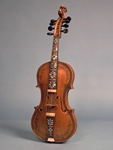
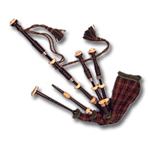
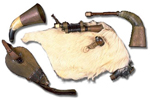
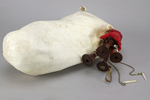
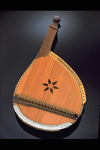
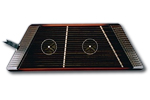
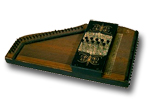
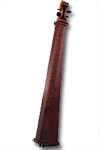

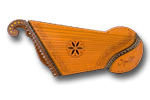
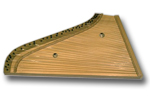
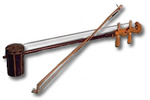
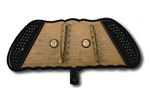
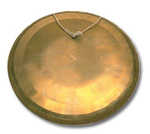
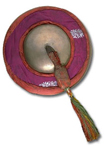
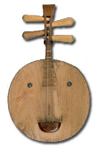
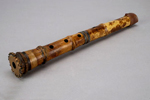
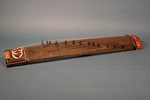
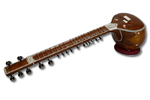
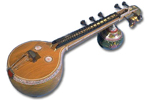
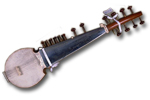
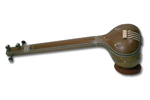
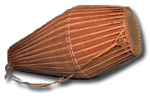
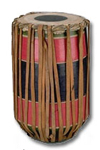
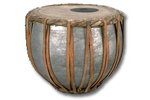
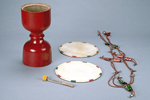
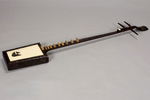
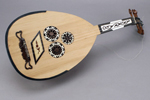
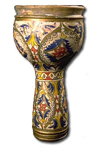
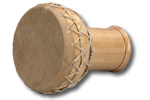







 L.A. BEAT GIG GUIDE
L.A. BEAT GIG GUIDE GIGS :: CDs :: NOISE
GIGS :: CDs :: NOISE L.A. BEAT ART ATTACK
L.A. BEAT ART ATTACK L.A. IS THE STAGE
L.A. IS THE STAGE Inside L.A. Inside
Inside L.A. Inside









No comments:
Post a Comment
Note: Only a member of this blog may post a comment.